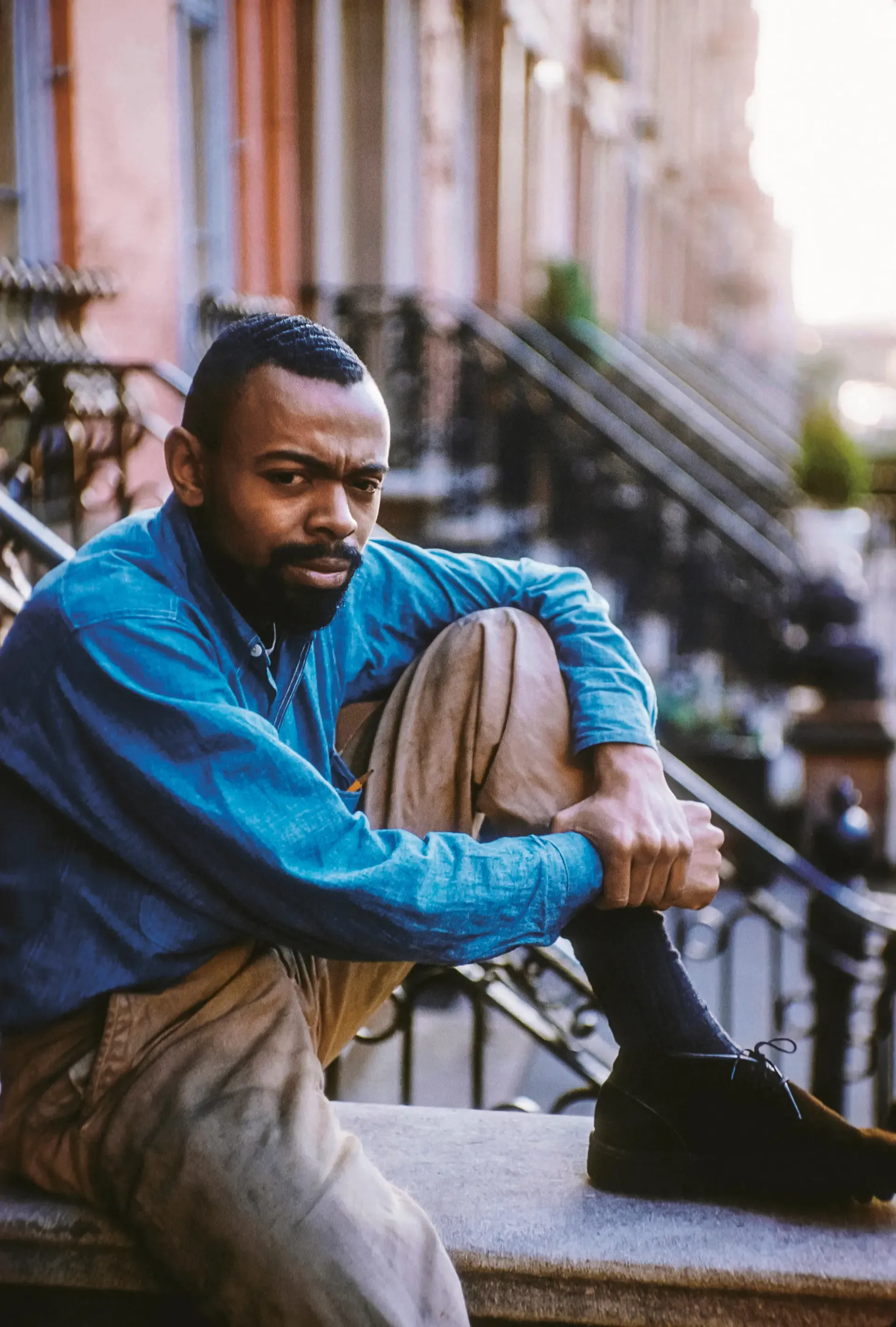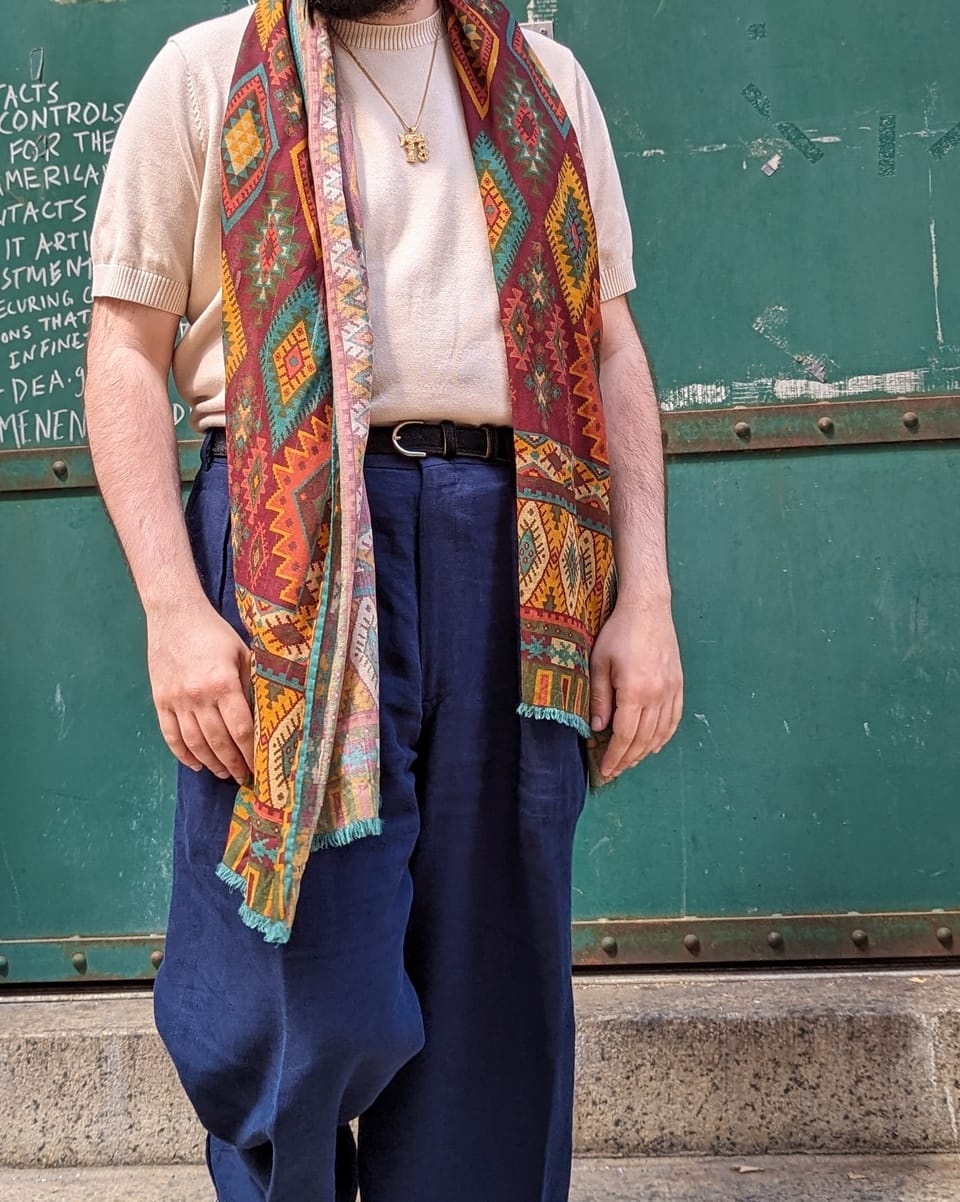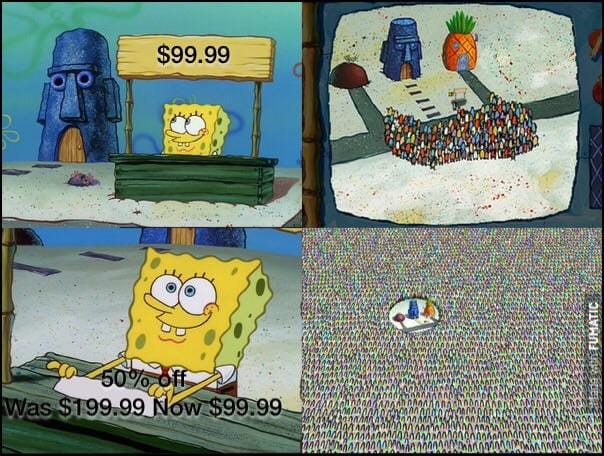How to Talk About Loafers
A loafer is essentially a slip-on shoe with a moccasin-like upper (top + sides), a separate, rigid sole (leather or, in some cases, rubber), and a heel. But there's a whole lot more to it than that.
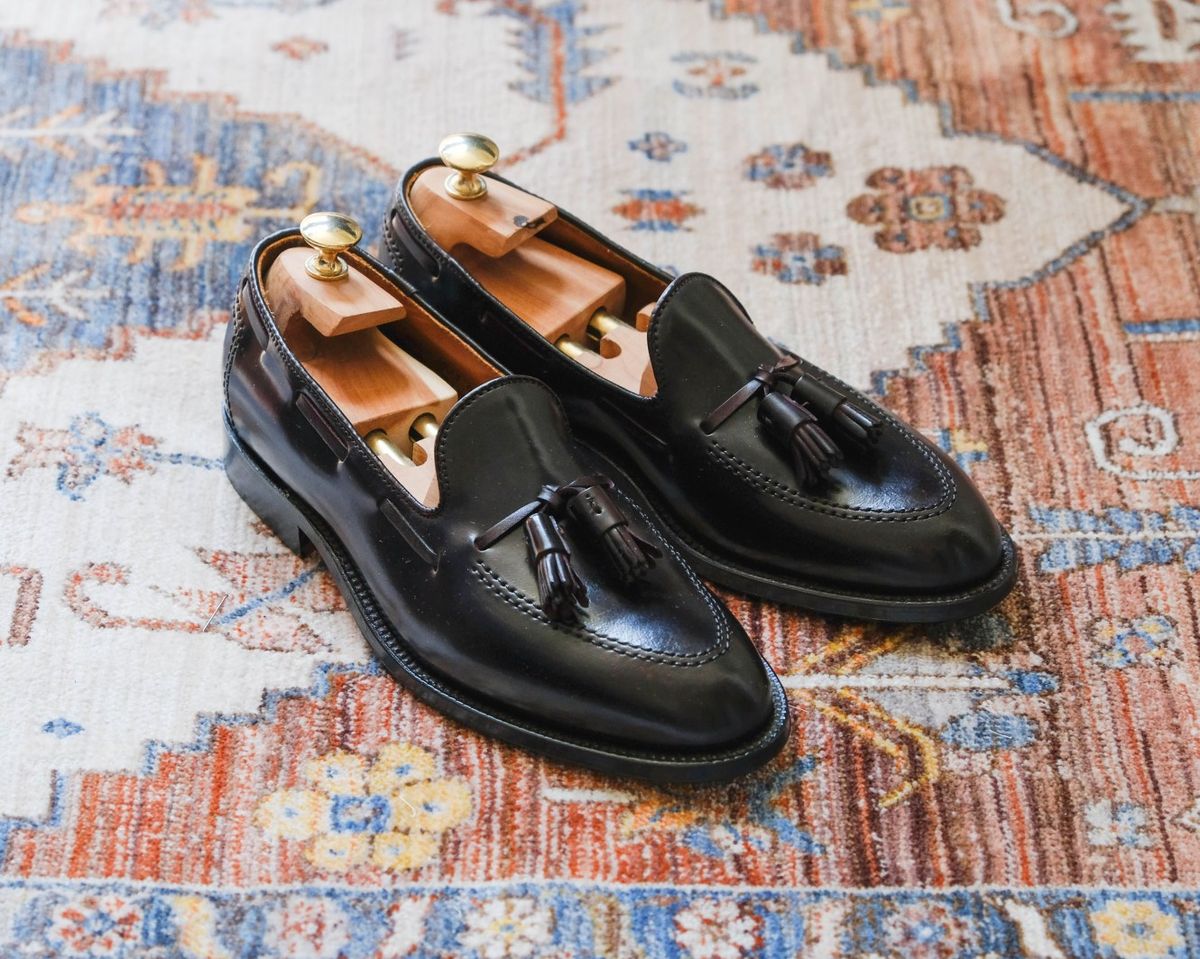
Talking a whole lot about menswear isn't quite the best way to dress better, but it can be a very helpful step. So I decided it would be helpful to write a guide explaining what exactly a loafer is, and then explaining the categories of loafers. I'm going to explain this in simple terms, so if you already know what a "vamp" is, you might find some of it really basic, but hopefully it will eventually get interesting.
What isn't a loafer?
A true Moccasin is not a loafer. A moccasin has a toppish part (technically, the plug), and then a seam connecting it to a sideish-wrap-around-the-bottomish part. That is to say, they might not have a distinct sole! The sole and the side of the shoe might be the same piece! Even if they do have a separate sole, it is probably soft. In no event does a Moccasin have a heel. Here's some history and detail. The soft sole is good for grass and forests, but bad for paved European roads. You would not wear a moccasin in a paved city, so you wouldn't wear it in modern business. It's a very casual shoe.
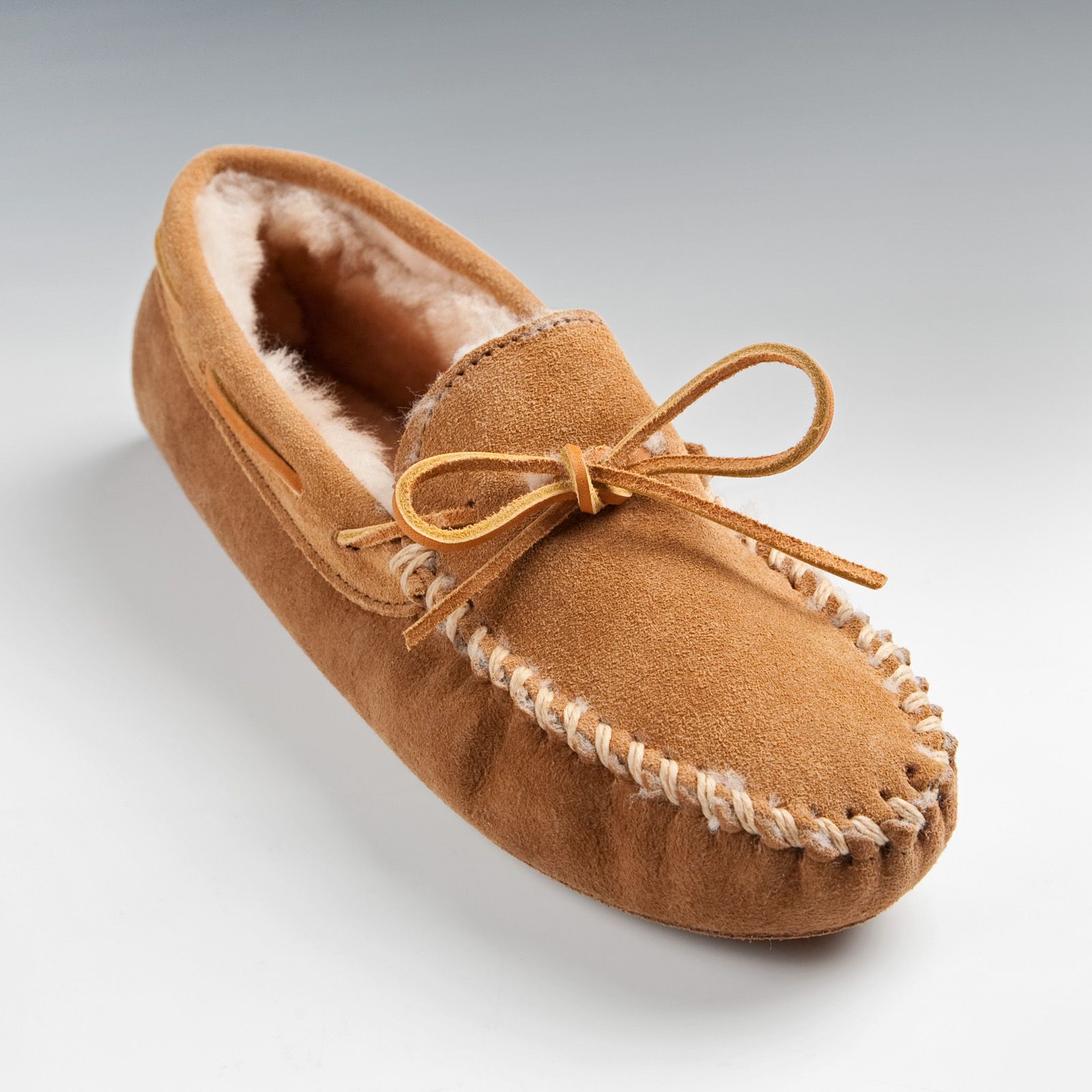
Unfortunately, I now need to touch on the way shoes are made: Shoes are generally made by stretching a piece of leather (or whatever) around a solid foot-shaped thing until it looks like it could wrap around a foot. This foot-shaped thing is called a "last." Most European dress shoes are "lasted" from the top-down, so that the upper creates a downward curve, and have a hard sole slapped on the bottom to finish. See, for example, how Tricker's are made. Moccasins, however, are generally lasted from the bottom up, and then have the plug / upper slapped on—or, well, "plugged in" to the empty spot on top of the shoe. So the curvy part of a moccasin is at the bottom. A moccasin, therefore, cups the foot, and doesn't need a separate, rigid sole.
Lu Shoemaker makes a pair of loafers. In case you needed a visaul demonstration of lasting.
A Driver is pretty much a moccasin that was inspired by loafers but then turned back into a moccasin ad midnight when its fairy godmother's spell wore off. They're partly defined by their heel area, where the very back of the shoe curves around the foot in such a way as to make driving comfortable—you can roll your foot back and forth easily.
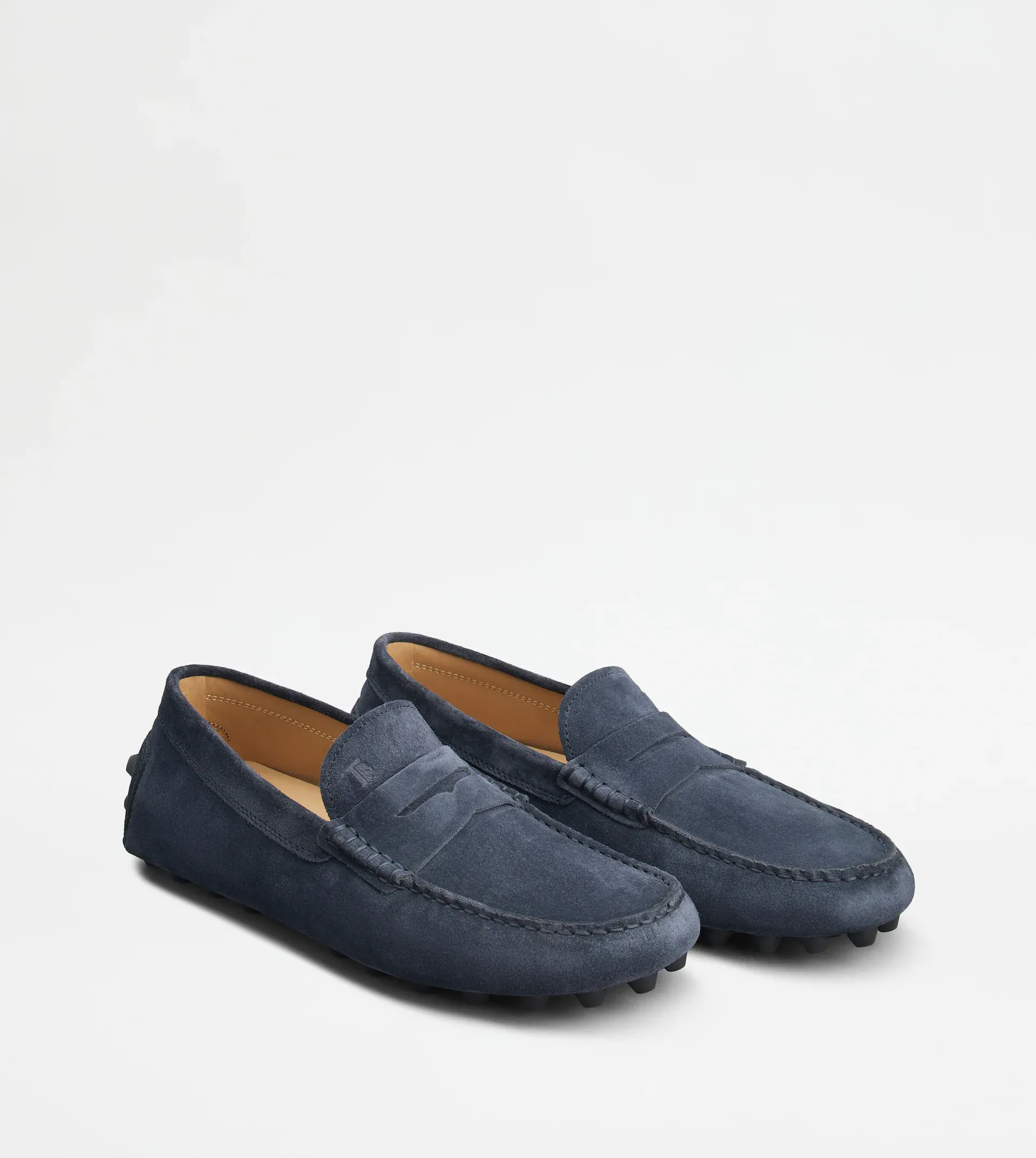
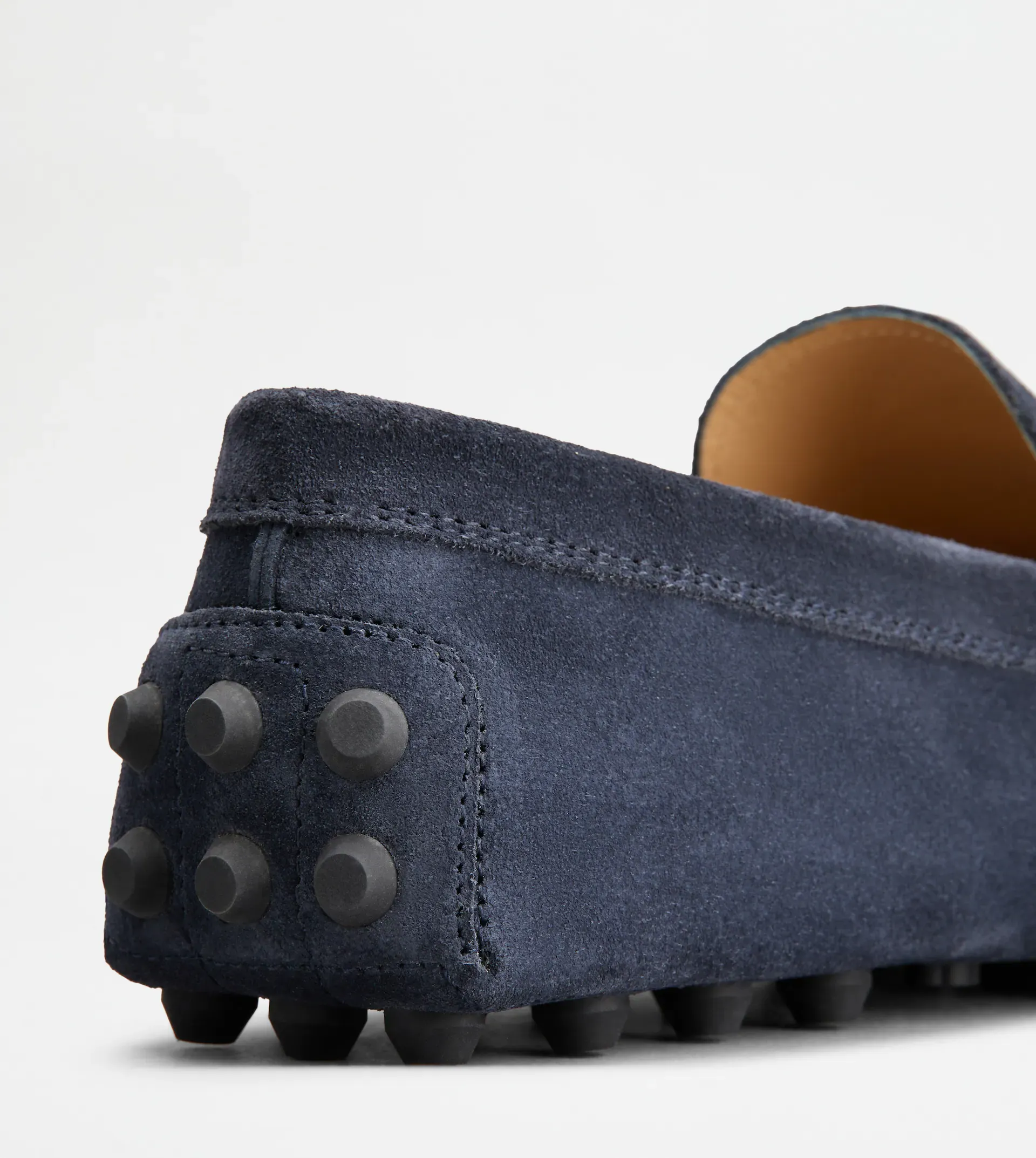
Tod's drivers. The nubs and the heel area make driving comfortable, but they're terrible for walking on... most surfaces, and they will not last.
Drivers often have nubs or little ball thingies on the bottom that add some grip. Jack Erwin makes some. Since they're not constructed like dress shoes, you can go ahead and cheap out on these—you won't be resoling them. These usually come with a plug and strap reminiscent of a pair of penny loafers', or sometimes a bad pair of bit loafers', but again, they are not loafers.
Slippers a.k.a. Dress Slippers a.k.a. Prince Albert Slippers a.k.a. Smoking Slippers a.k.a. "Wholecut Loafers" are a sole + a solid curved upper. They do not separate that toppish part from a sideish part—their upper is often wholecut, hence that name. They have a dress shoe's sole, so I'd say they qualify as dress shoes, but you probably want to wear them casually... or with eveningwear, but nothing in between. They can come in velvet, suede, or smooth leather. Plain black velvet slippers are the black-tie-appropriate option. The rest can also be worn casually can be worn casually. If they're "smoking slippers," or have any embroidery, they should only be worn casually... but "casually" might include "at an evening party you throw in your home where you wear a dressing gown." Or in creative black tie. And... well, some slippers can even be pulled off a few places in the middle. But, at any stage, you need to know what you're doing. They're a tricky shoe to wear—you gotta rock it, or not wear it at all. But damn, are they sexy.
Espadrilles are also a type of slipper with a flat sole, and are thus not loafers. Even if you reject my definition about the seam, a espadrilles have jute soles without a heel, or sometimes rubber soles without a heel, and really don't qualify as loafers. They're never dress shoes, and wearing them with suits is about as big of a move as wearing sneakers with a suit—which is not to say that it's necessarily bad, but it's a big high/low move.
Van's slip-ons use elastic, so they're... kind of slippers. They don't have a seam or a heel, and they're obviously not dress shoes. So again, they're not loafers.
For avoidance of doubt, the word slipper is also (and more commonly) used to describe these cozy things, but a lot of them are more moccasins than they are slippers... technically.
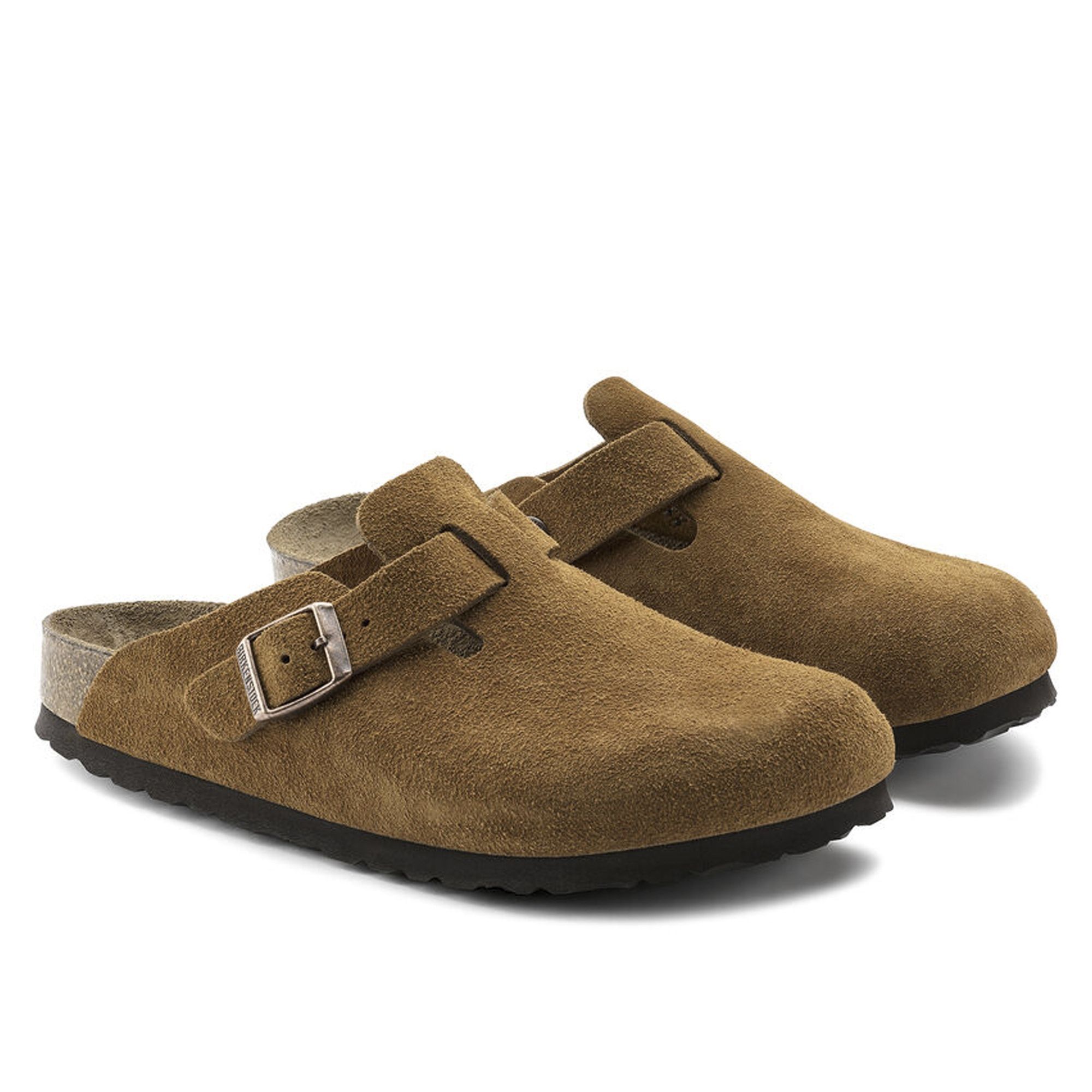
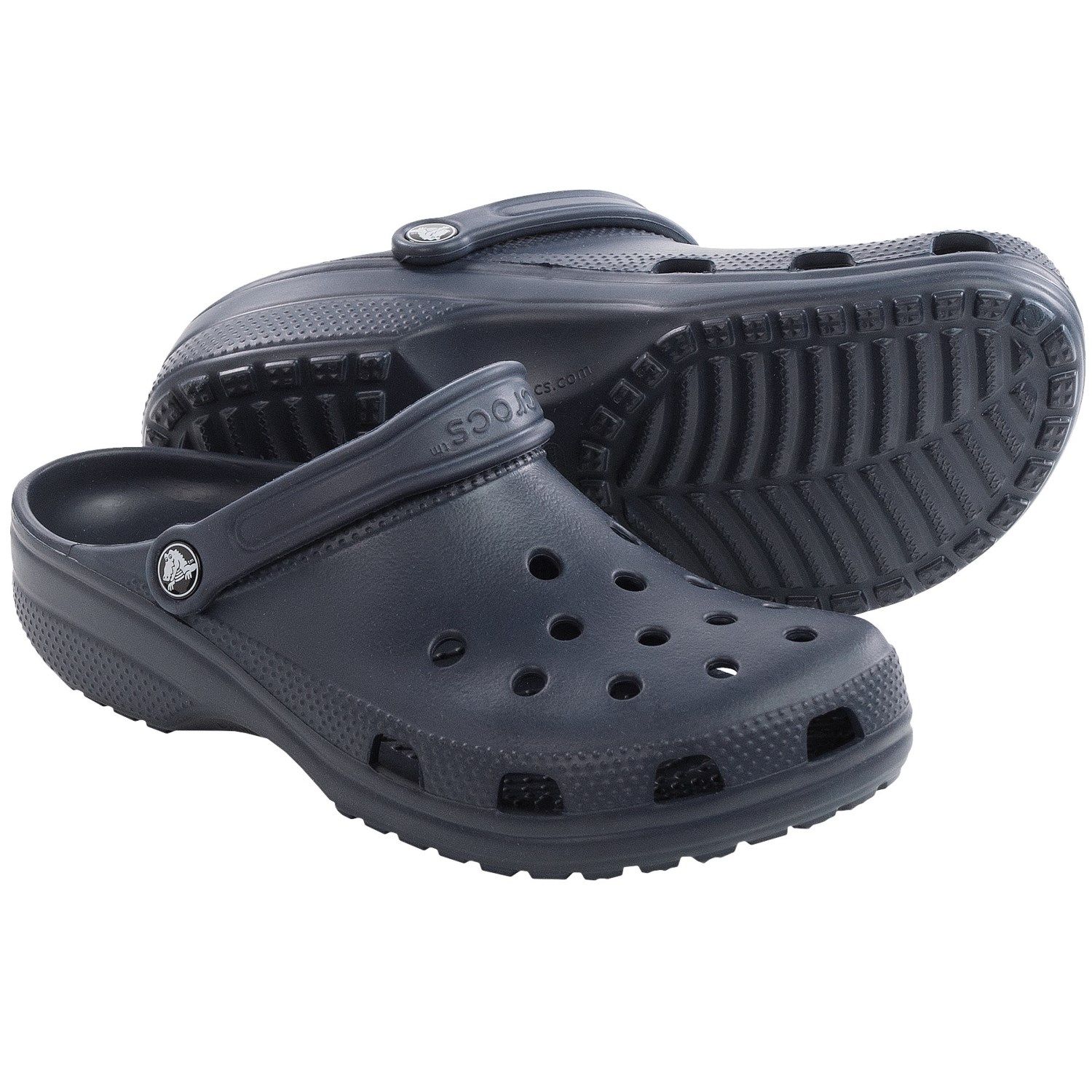
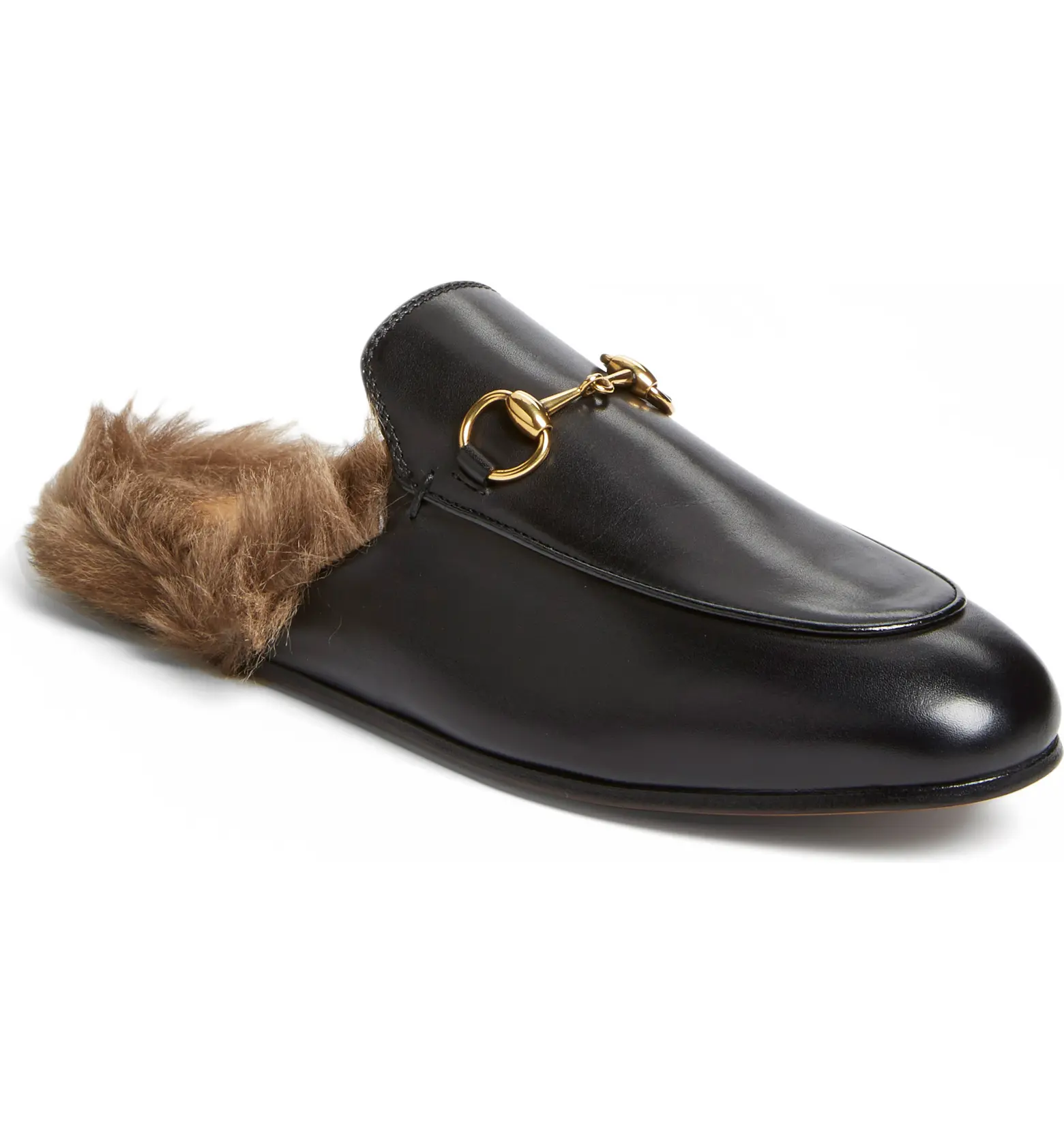
Birkenstock Boston clogs; Crocs clogs; Gucci's Princetown Mule
Clogs and Mules are not loafers, since they're backless—the upper of each only goes around the front of the foot. I'd generally think of a clog as a cork-soled or sometimes wood-soled shoe, whereas a mule is more like a backless loafer. However, fully rubber clogs are very popular these days (for some reason).
You might also call chelsea boots slip-ons, but no, they are not loafers. Sandals and "slides" and stuff are also, and I hope this is obvious, not loafers.
What is a loafer?
A loafer is essentially a slip-on shoe with a moccasin-like upper (a plug with a seam or stitch separating it from the sides (which are here referred to as a "vamp"), a distinct, rigid sole (leather or, in some cases, rubber), and a heel. There's always some sort of seam or stitching connecting the sides (or "vamp") to the top (or "plug")—even if it's subtle, like in these Ferragamo apron toe bit loafers. If you see no seam or stitching along the top—if your shoe is, for example, wholecut—it is, by my definition, not a loafer, it is a slipper.
Note, however, that some people refer to slippers as "wholecut loafers," and some of those people are smarter than me. Language is just funny like that. Further confounding this issue, note that some apron toe loafers, such as Alden LHS, are technically wholecut, with stitching or something added on after lasting to make them loafers. The curve here may also be shaped so that there is still some distinction between a plug and vamp.
When I say "slip-on shoe," I mean that a loafer does not have functional closure mechanism, useful in loosening and tightening the shoe. Laces, buckles, straps, velcro... nothing. You just slip 'em on. These things may still exist for ornamentation. A buckle might still open and close, but the line comes when you open the buckle to actually get the shoe on, and close it to tighten the shoe.
The loafer seems to have two different origins—idk, I'm not a historian, but they were supposedly developed independently. One story is, around 1926, some British dude named Wildsmith came up with them as a simpler variant on other British shoes (but possibly inspired by Aurlands). The other is, in 1930, some Norwegian in Aurland who saw some Native American moccasins and thought, "you know, that's alright—now let's smash that into our dress shoes and see what happens." Their toes were more moccasin-like, and thicker, so we call them "moc toes." If you've heard the word "weejun" that's what G.H. Bass decided to call his line of these Norwegian-style shoes in 1936. You'll see the names "Wildsmith" and "Aurland" again soon. Some Belgians independently came up with their own loafers based on slippers—I'll get into them, as well.
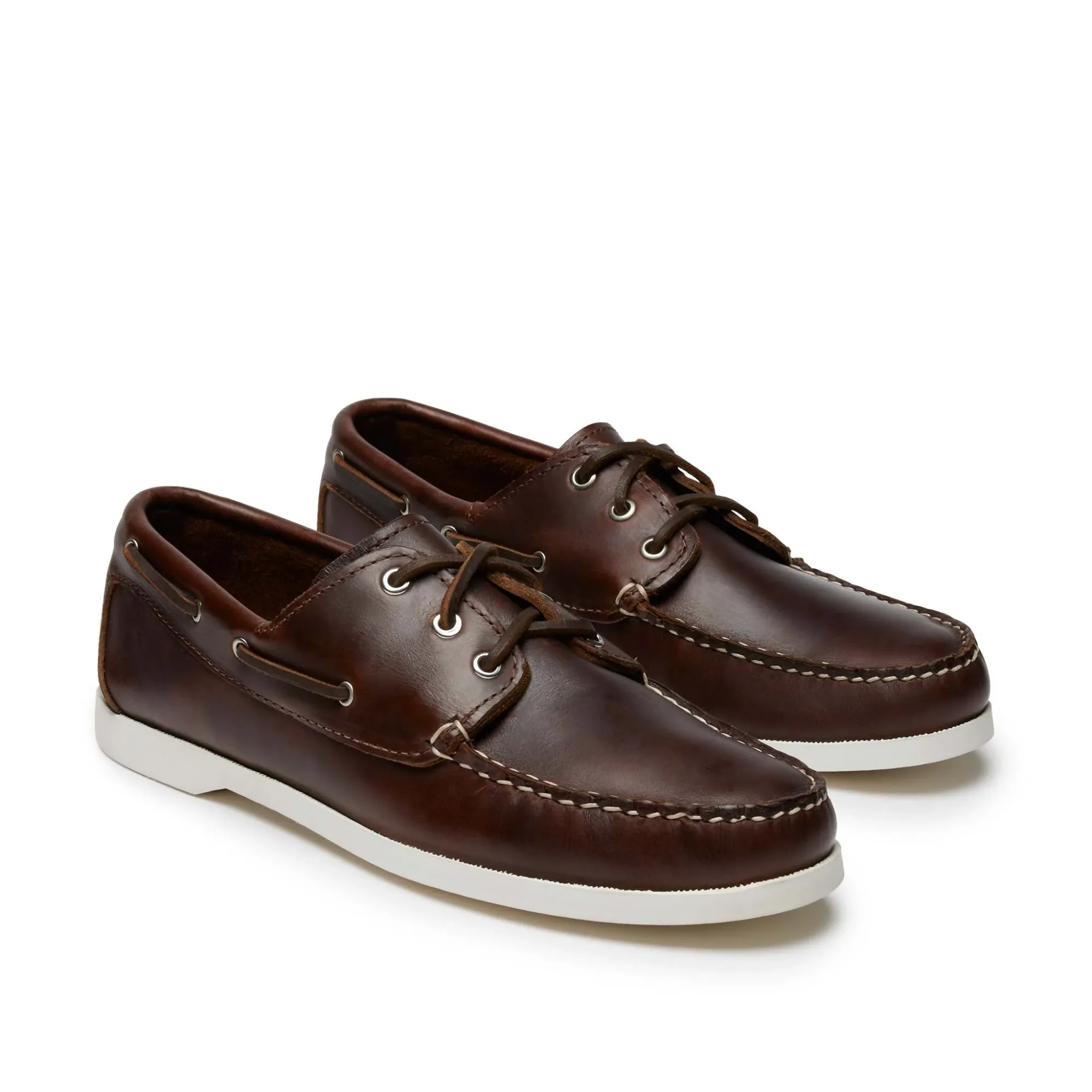
Boat shoes kind of... are loafers, as long as they have a rigid sole, a heel, and a moccasin-style upper with not-too-functional lacing. That said, if you go around calling boat shoes loafers, you'll get slapped. Do you want to be right, and slapped, or wrong, but unslapped? Do not wear boat shoes outside of super casual scenarios. Everything below, except for boat shoes, generally counts as a dress shoe.
Materials
Most of the materials you might use to make any dress shoe work for a loafer too. Mostly leathers, including suede. Suede works nicely on a casual loafer, as it does on a casual anything else. Shell cordovan is popular, especially from Alden. You probably don't want patent leather. You might want velvet, but that'll be hard to care for. Wool and rubber and synthetic materials exist too. I'm not going to dig any deeper, since this applies to all shoes, and I want to keep this guide focused on loafers.
I will note: if you really want to talk about materials, you want to know a bit about tanneries. Horween's shell cordovan is popular for loafers—Alden loafers in Horween's "Color 8" shell (a dark reddish color) are particularly special, but black shell alden tassels, cigar shell, whiskey shell... if you like shell, learn the "proper" names for Horween's colors. Additionally, C.F. Stead is known for suede, particularly for "Repello" suede, which has a good waterproof treatment right out the box.
Construction
Like all dress shoes, the soles of a loafer can be stitched or glued, and stitched is generally better. I won't get into details here either, since, again, you can find this info in a more general shoe guide (or dive deep on /r/goodyearwelt). Again, these shoes are made with a last, or pretend foot thing.
Most dress shoes are lasted from the top-down. That is to say, imagine I take a big stretchy piece of leather and stretch it over the top of your foot. This creates a smooth downward curve. That's sleek. That's pretty dressy.
Loafers, however, are half-inspired by moccasins. And moccasins, as we discussed, are lasted from the bottom up, which means that their toes are not a smooth downward curve—but lets get into that below... Many brands will refer to this as "genuine moccasin construction," but remember, moccasins wouldn't have a hard sole and heel stitched on, because they weren't made for paved roads or other modern environments, so at this point, we're talking about a moccasin-style loafer made with a moccasin-style last, rather than a true moccasin.
The shape of a air of loafers depends largely on the last. People who are obsessed with loafers will know a few different Alden lasts by name (such as the Van, Aberdeen, and Modified lasts), and maybe some other lasts (Carmina's Xim and Uetam lasts are worth knowing). You might also want to talk about the toe shape, how high or low the vamp goes, or some other styling details I'll describe below.
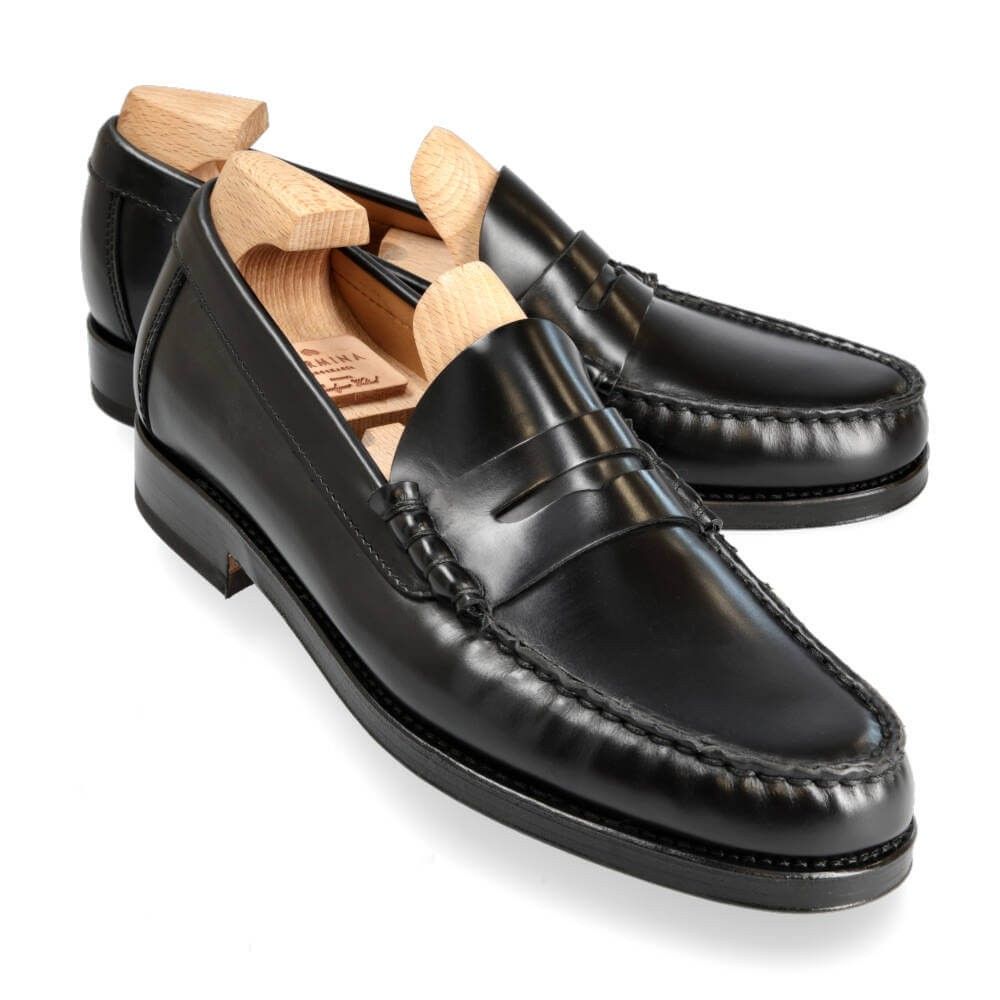

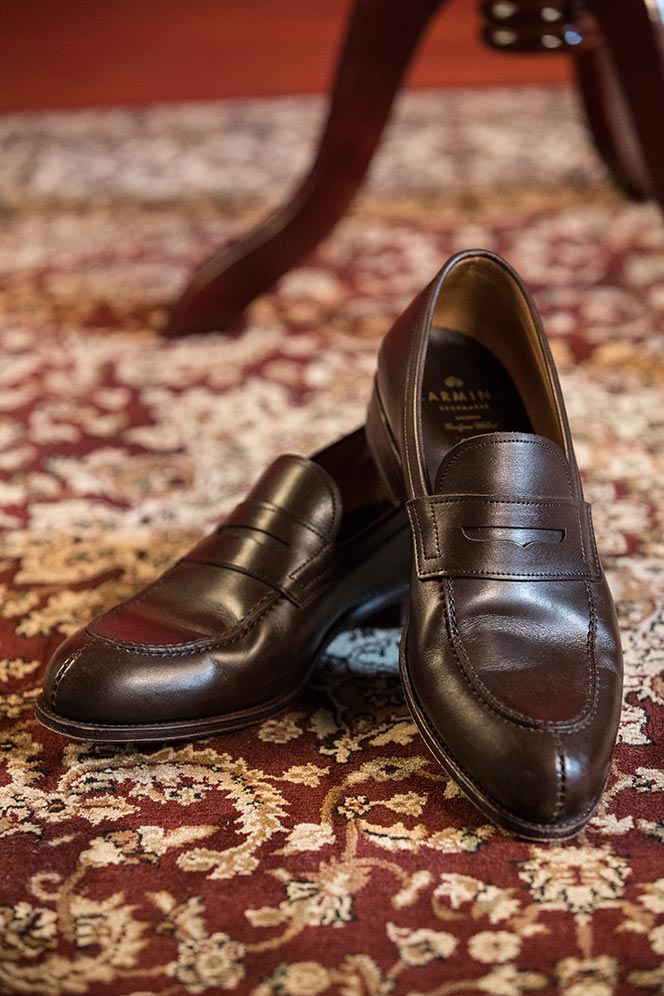
Carmina's Moc-toe penny loafers in the Xim last; Carmina Apron-toe penny loafers with a full strap; Carmina split-toe apron-toe penny loafers.
Toe Styles
Moccasin-style lasting usually goes hand in hand with a thick moccasin-like seam, for a "moc toe." Since it takes these elements for Native American style, and since the shoe isn't very sleek, it's not the most formal thing. You should probably wear these in casual looks—like, wear them with shorts and no show socks before you wear them a suit. Generally.
European-style top-down lasting, on the other hand, is usually paired with an "apron toe" with a tiny seam for a smooth downward curve. Since it's a sleek Euoropean style, it's relatively formal. You can wear these with a suit just fine, but they'll usually look odd with shorts or jeans or no show socks.
Loafers can also have a "split toe." Most common with an apron toe, a split toe has a seam going down the front of the shoe. These are kinda dumb-looking, but kinda in a good way.
"Bicicyle Toe" loafers also exist, unfortunately. They might be cheaper to make (since you can use scraps of leather instead of larger pieces, and hide imperfections through bad styling gimmicks), or they might be easier to fit (since the toe tends to be wider). They're not good, and you need to promise me you won't buy any! These Ecco bicycle toe venetian loafers are not acceptable, and you know I usually support wearing whatever you want. Don't wear these.
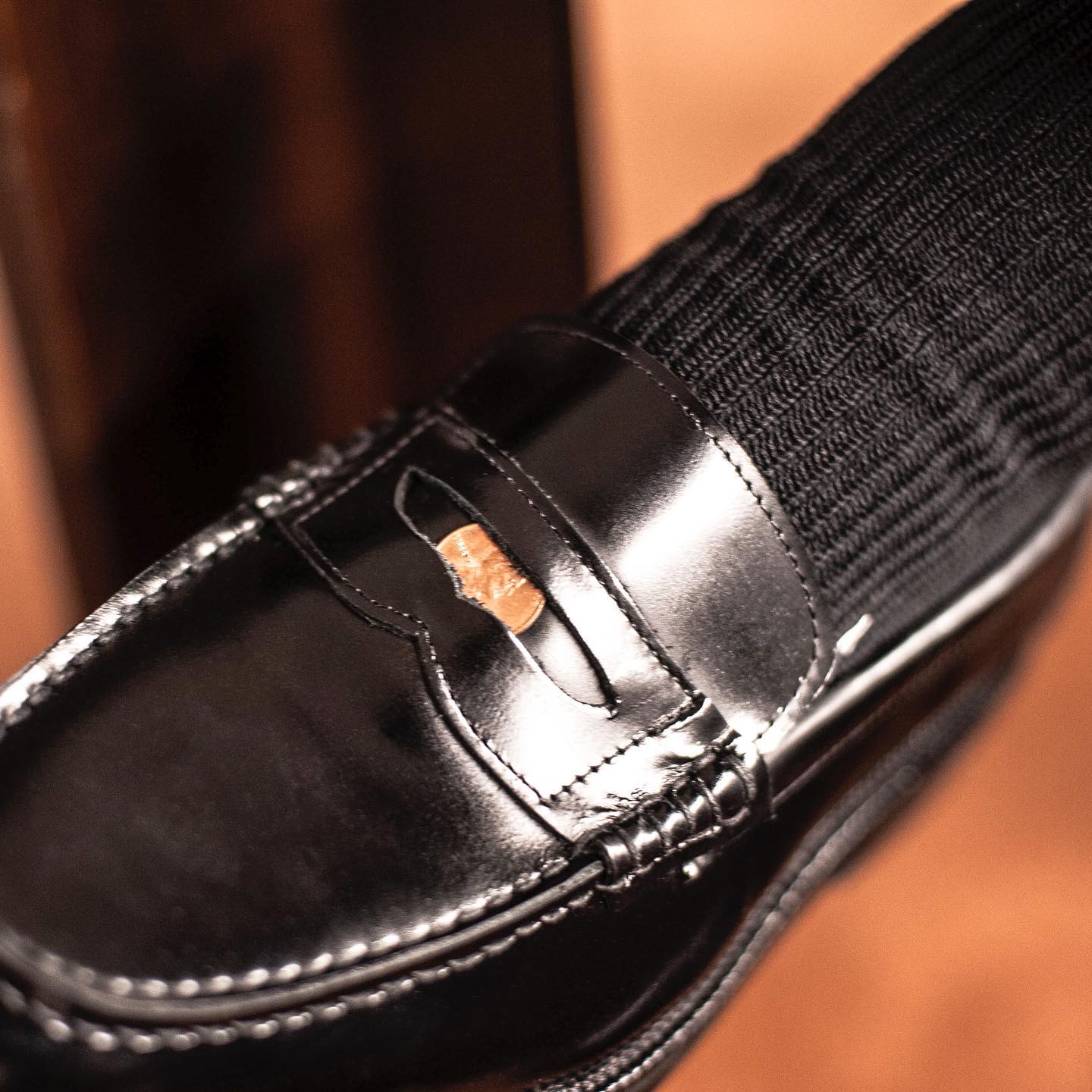
Categories of Loafers
Penny Loafers—including Aurland and Wildsmith loafers—are loafers with a "saddle," a sort of strap going across the top, with a sort of diamond-shape opening near the top/middle of the strap. The story goes, Ivy League bros put a penny in that opening to remind them to call their mommies every day. Whether they did this because they were homesick, or kind, or afraid that they'd lose their inheritance, I haven't the foggiest, but one way or another, they were mamma's boys.
For this reason, penny loafers are a staple of "Ivy style," a broad category of styles inspired by American college students. Ivy style has been reimagined as Japanese Ivy, French Ivy, preppy style, and current waves of neo-ivy and neo-prep.
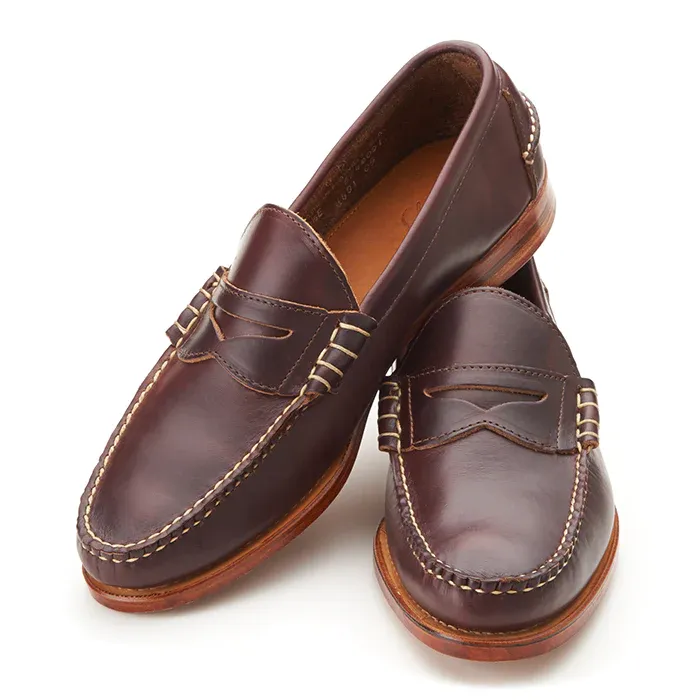
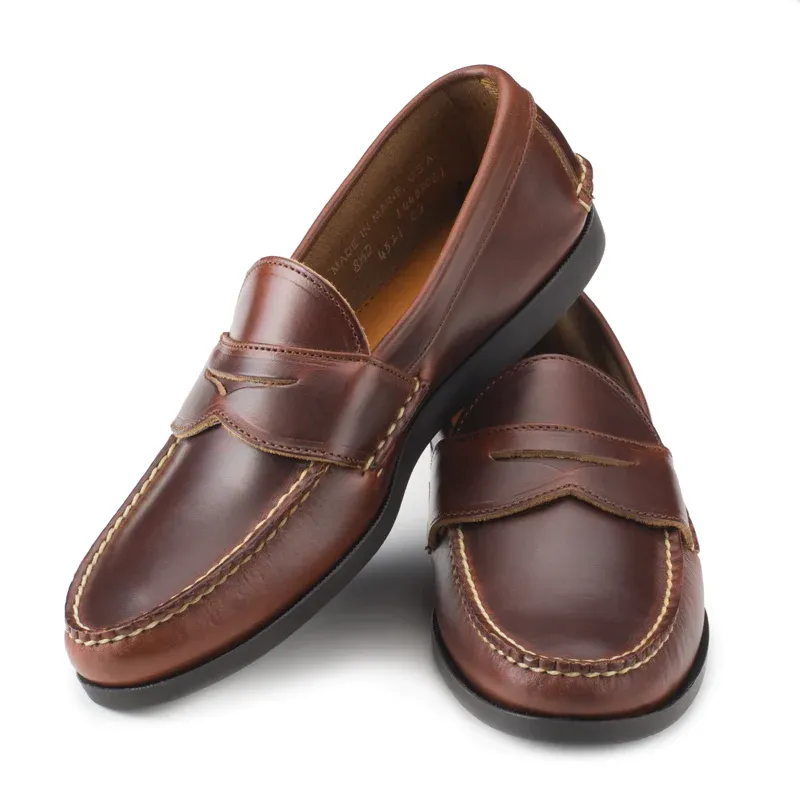
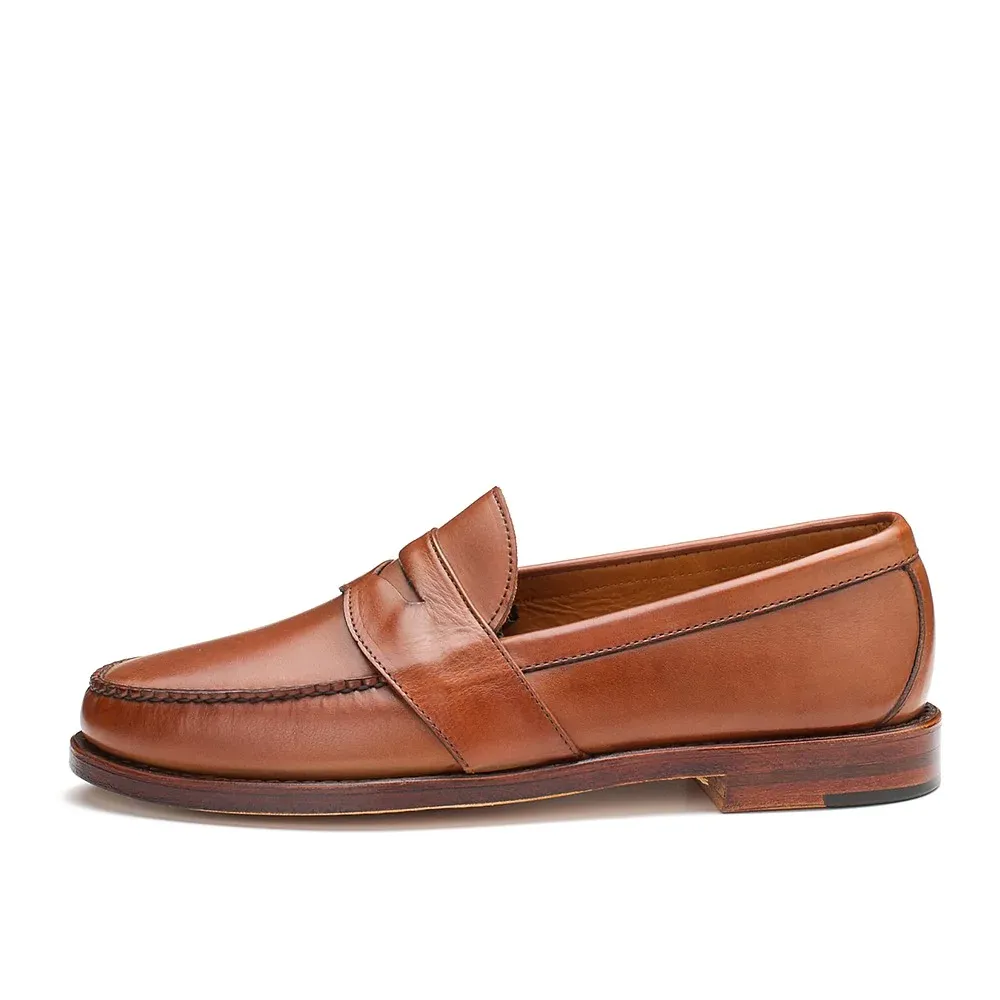
Rancourt Beefroll, Pinch, and "Weltline" (full-strap) Penny Loafers. Full-straps are usually used on dressier lasts.
The strap can go all the way to the sole ("full strap"), or just to the seam ("half strap"), or slightly past the seam ("pinch)", or to the seam, but then with a thick roll on the seam—"beefroll." Beefrolls are suuuuper casual—don't wear them with a suit. A lot of American companies have gotten to making beefrolls with hand-sewn moc toes, which, even with a dress shoe sole, is especially casual. You'll see that style on a lot of drivers for that reason. Full straps are usually reserved for very dressy loafers.
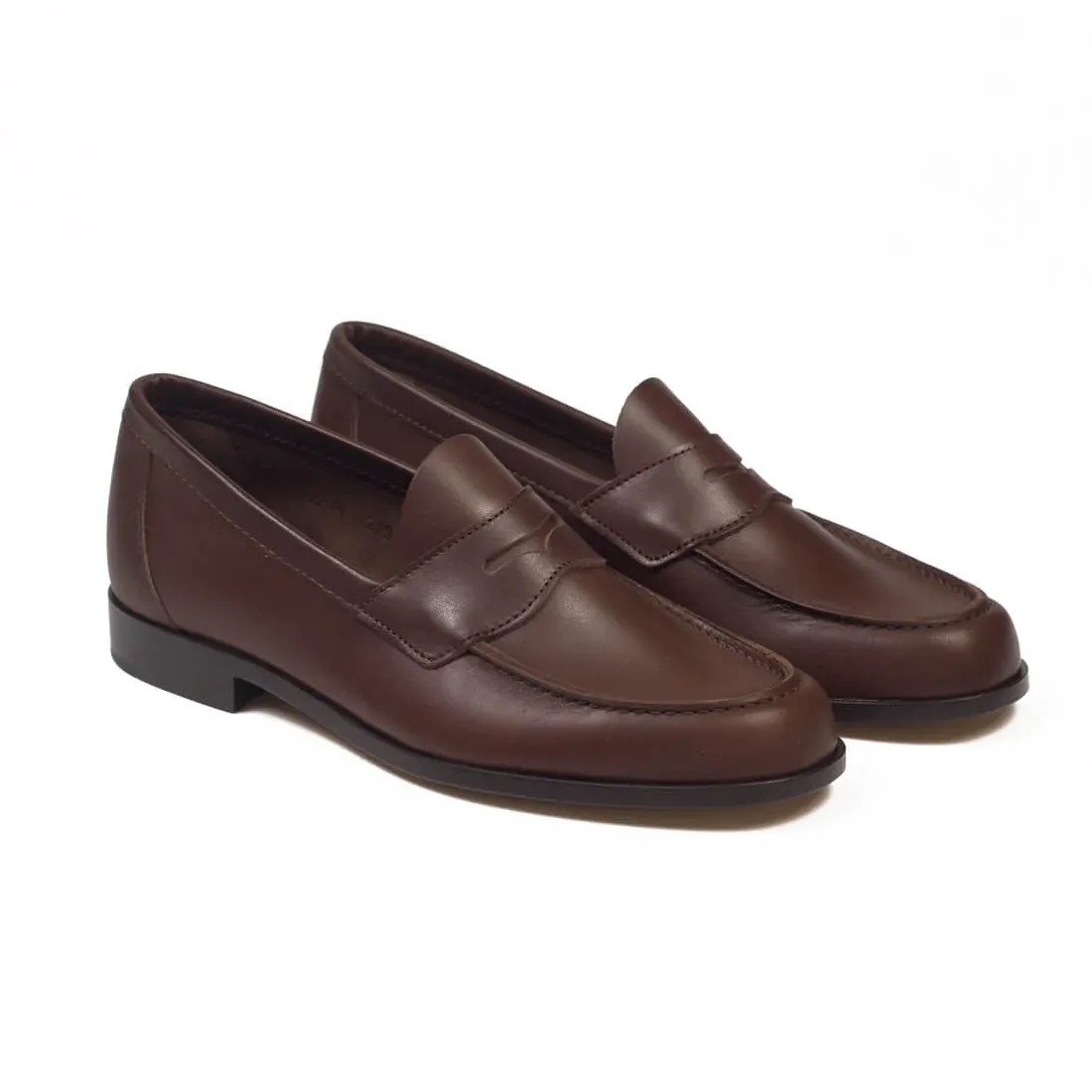
The "Aurland" loafer (1930), since it is based directly on the moccasin, has a moc toe. This is relatively casual, which is why a lot of companies (like Rancourt above) combine it with the beefroll for a very casual "dress" shoe. Half/full straps are still relatively casual, but less so.
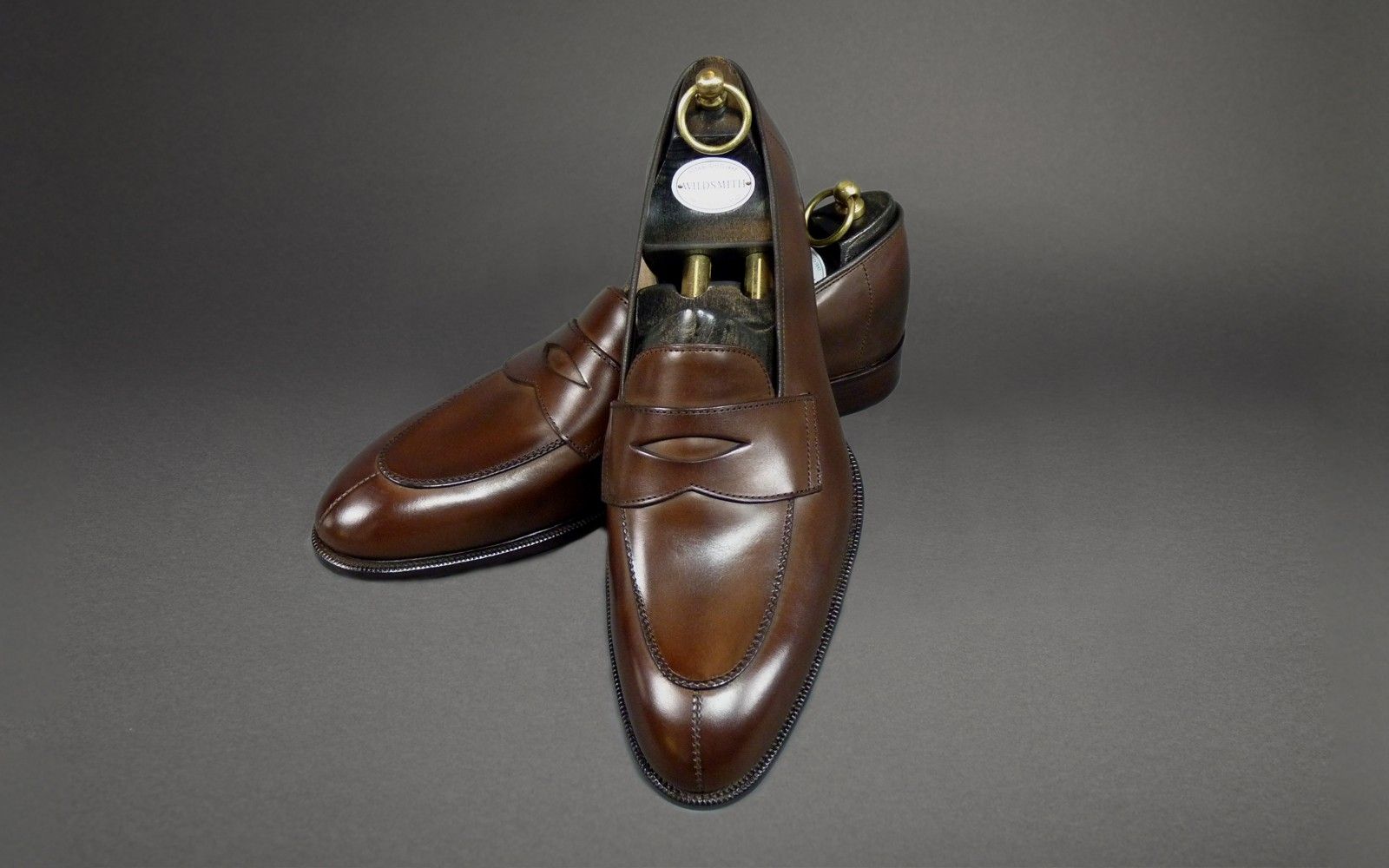
The Wildsmith loafer (1926) has an Apron toe. Again, this is a European style, so it's noticeably dressier. A lot of people here will tell you still not to wear them with suits, but you're probably fine in the real world. Some people consider getting something like this in patent leather for black tie, though, and that's wrong. You would be looking for velvet slippers or patent leather opera pumps.
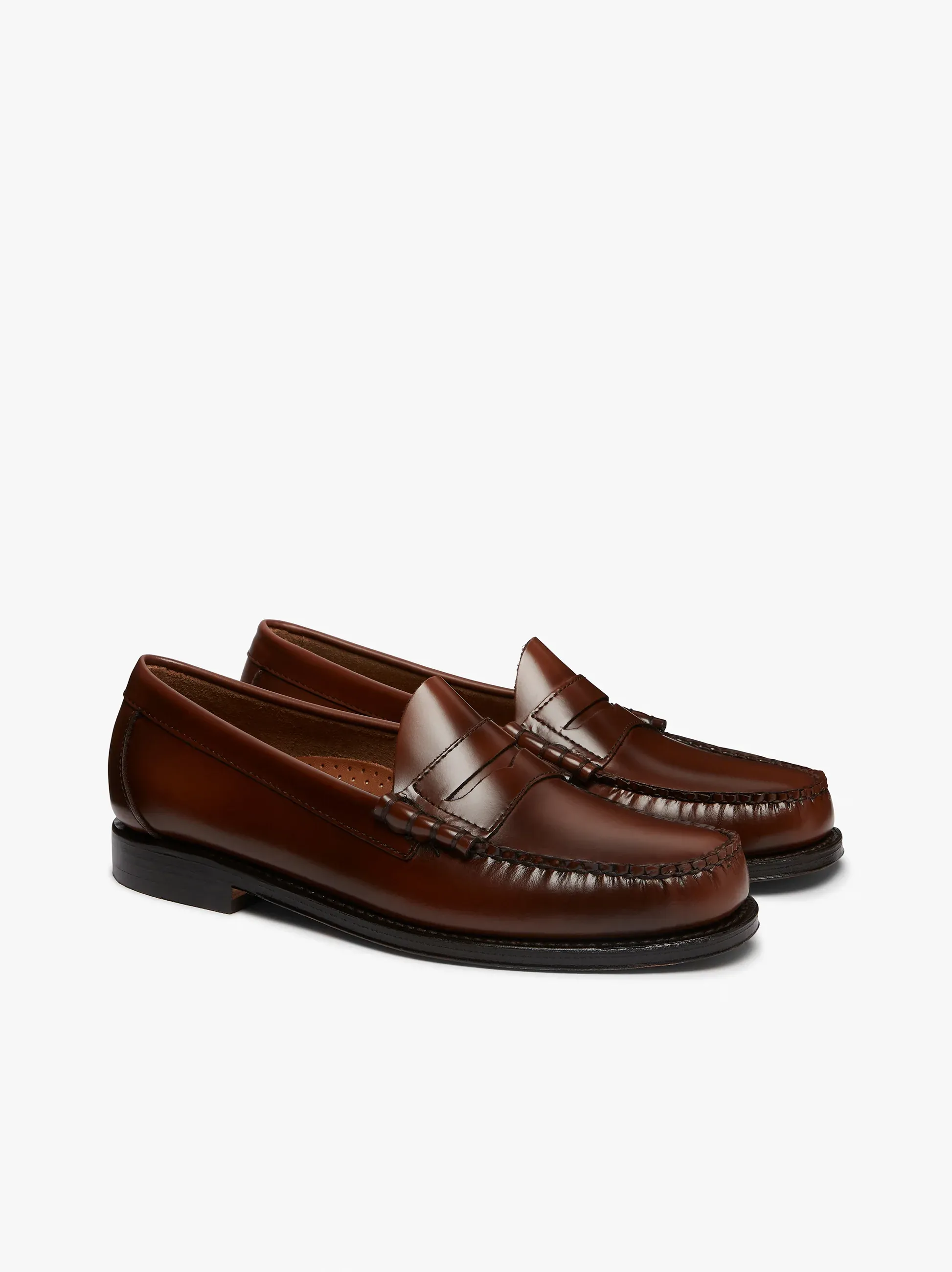
Again, companies like G.H. Bass helped bring loafers to the US. The Bass "Weegun" is named in referance to Aurland (it's short for "Norweigan"). They're widely considered to be pretty underwhelming these days, but hey, the price is right. Update: Bass released a higher-end "1876" Line. They're supposed to be premium, but I'm not sure how premium.
Your best bets for quality penny loafers these days are Alden, Carmina, or Meermin on the dressy side, and Oak Street Bootmakers, Rancourt, and Quoddy on the rustic end. There are some funkier brands nar the bottom of this article.

Tassel Loafers are, believe it or not, loafers with a sort of a tassel thingy. Alden made the original tassel loafer in 1950, and the style was popularized when Alden started selling them with Brooks Brothers in 1957. They continued this partnership until just a few years ago. Arguably stupidest-looking category of loafers here, Tassel loafers are, confusingly, popular with rich old people and are considered relatively formal. This may have to do with the idea that the tassel is based on laces, and laces make things more formal, even though the idea of laces here is partially inspired by the moccasin. Note, particularly, that the "laces" go around the side on these particular Aldens—I'm not sure what this is called, but it is again reminiscent of the moccasin.
Tassel loafers are not considered to be part of Ivy style, and are rather hard to dress down. Kilted tassel loafers are not too rare, but kilts look kind of dumb—more on them below.
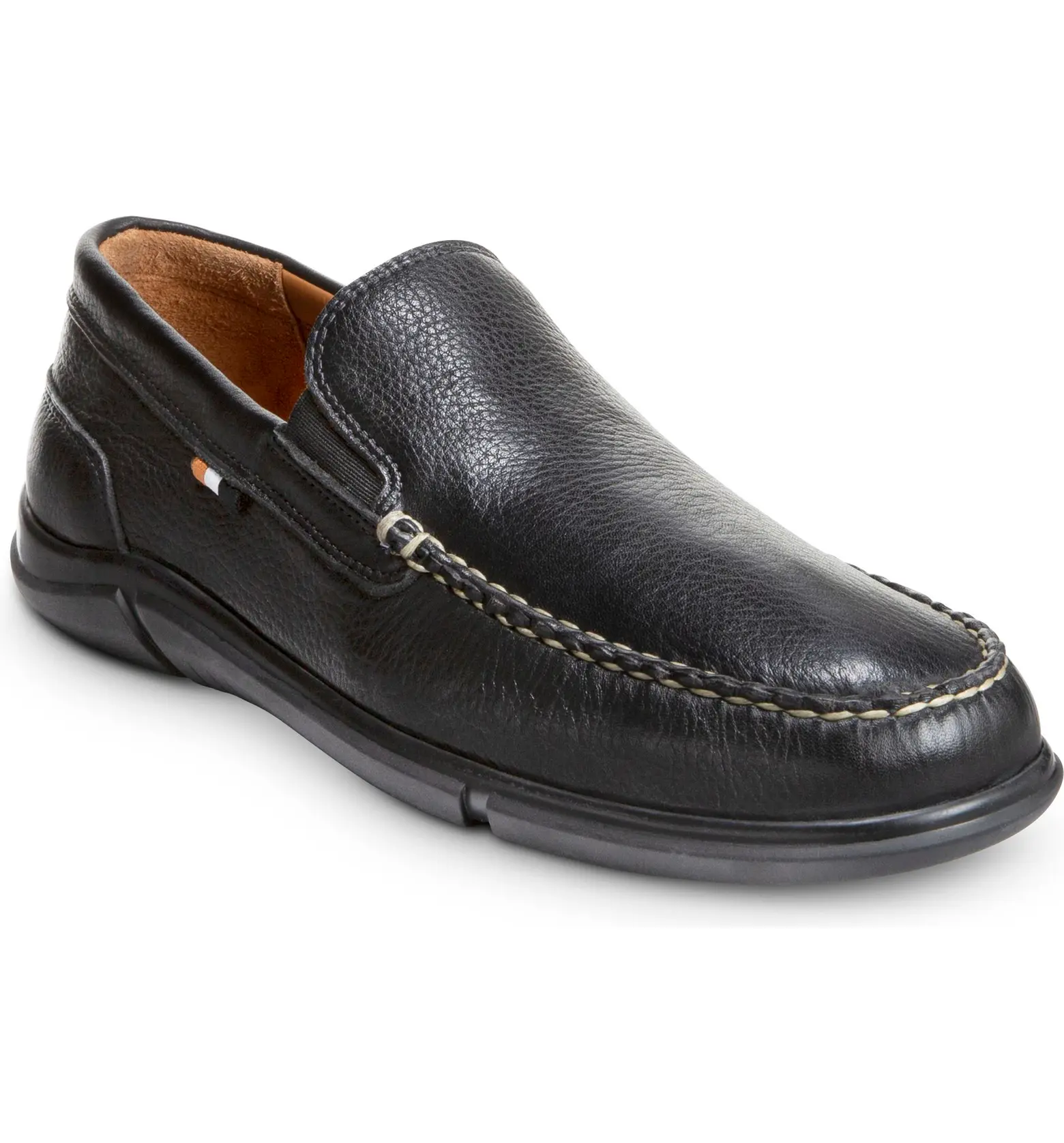
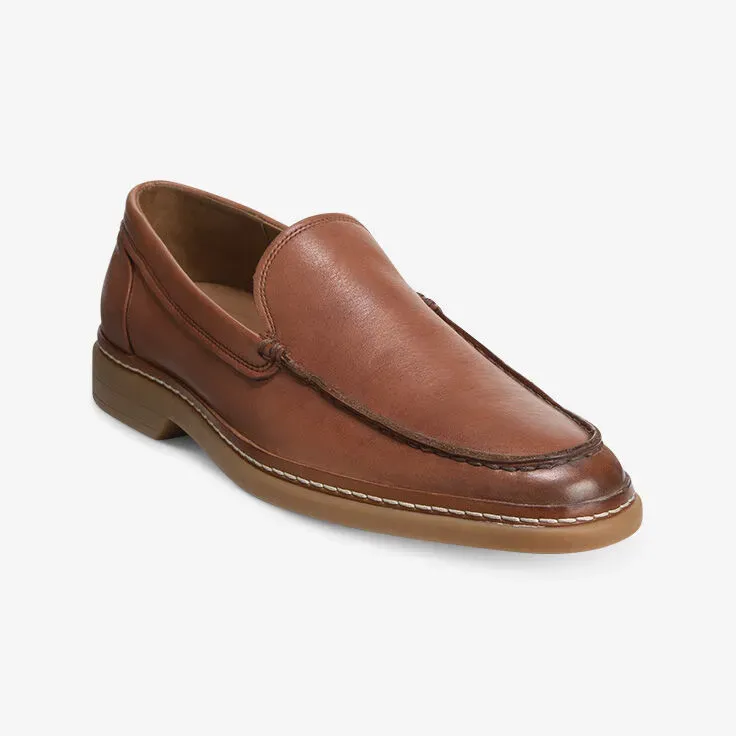
Allen Edmonds' Miles and Wilder Venetian loafers. Both abominations, but the left pair is totally unforgivable.
Venetian Loafers don't have a tassel, or a strap, or anything. They're kinda "plain." They're... Bad. Simultaneously ugly and boring. I can imagine a good pair existing, but almost always, if you see a pair of venetian loafers, they'll be total trash. See the abominations from Allen Edmonds above.
These terrible sneaker-loafer hybrids from Loro Piana also exist. For some terrible reason, they are extremely popular among people with too much money money and too little taste.
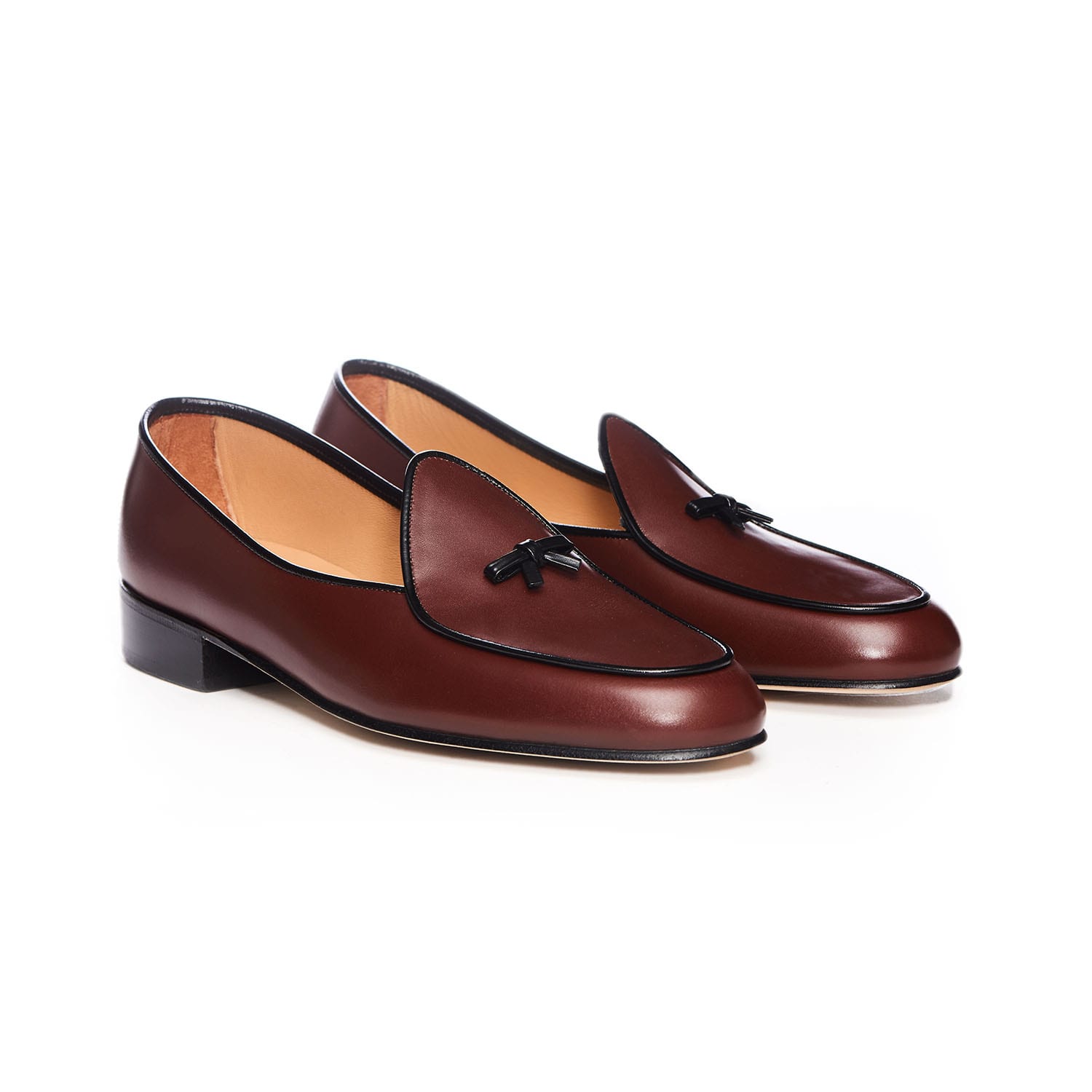
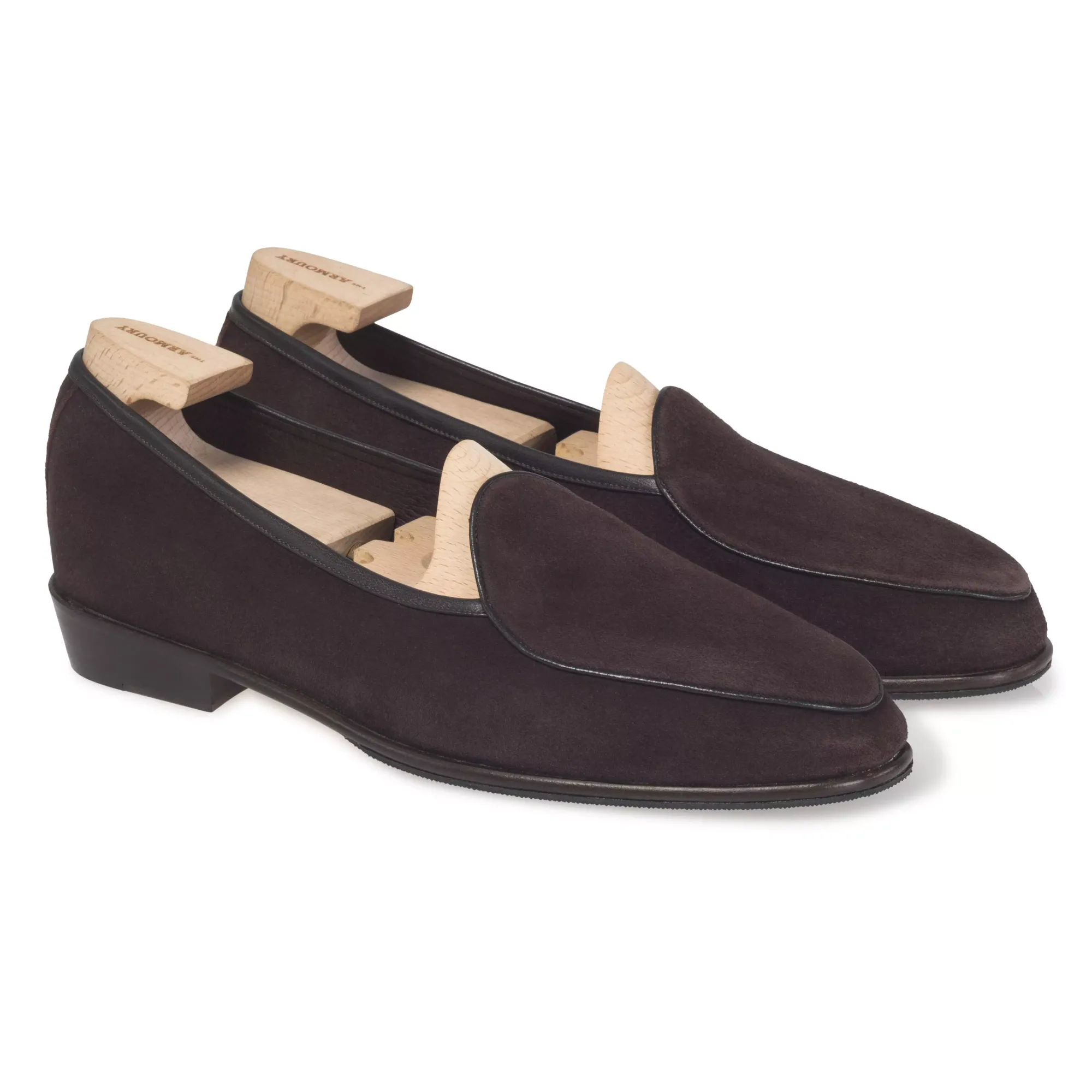
Belgian Shoes Henri; Baudoin & Lange Sagan Classic
Belgian Loafers (c. 1954) are a little different. Originally made by Belgian Shoes, and inspired by slippers rather than by moccasins, they often have a tiny bow, although they look unusually good plain (Belgian-ness overrides Venetian-ness). They also tend to have a slightly different construction and usual last, with a small seam, but still very distinct top and side parts. Baudoin & Lange is another great brand making Belgians.
Since they're based on slippers, Belgian loafers are usually sleeker than other types of loafers. This kind of makes them more formal—probably the most formal loafer by most standards. Jacques Solovière makes chunkier ones, but these are really very unusual. You'll notice that there's B&L's website includes options in patent leather and velvet. While Belgian loafers are not traditionally black tie appropriate (there's a very short list of shoes that technically count), they are part of the increasing category of footwear well-dressed men tend to think look good with a tuxedo.
On the other hand, since they're based on slippers, there's a certain... casual luxury aspect to them. They look almost like you could wear them around the house. A good pair of suede Belgians has a way of making tailoring feel more casual and softer. They can also look great with shorts.
Strangely, however, I don't like Belgian loafers in business formal attire. They don't look like businessy shoes, they don't fit the vibe.
For a very detailed overview of brands making Belgian loafers, check out Pedro's guide here.
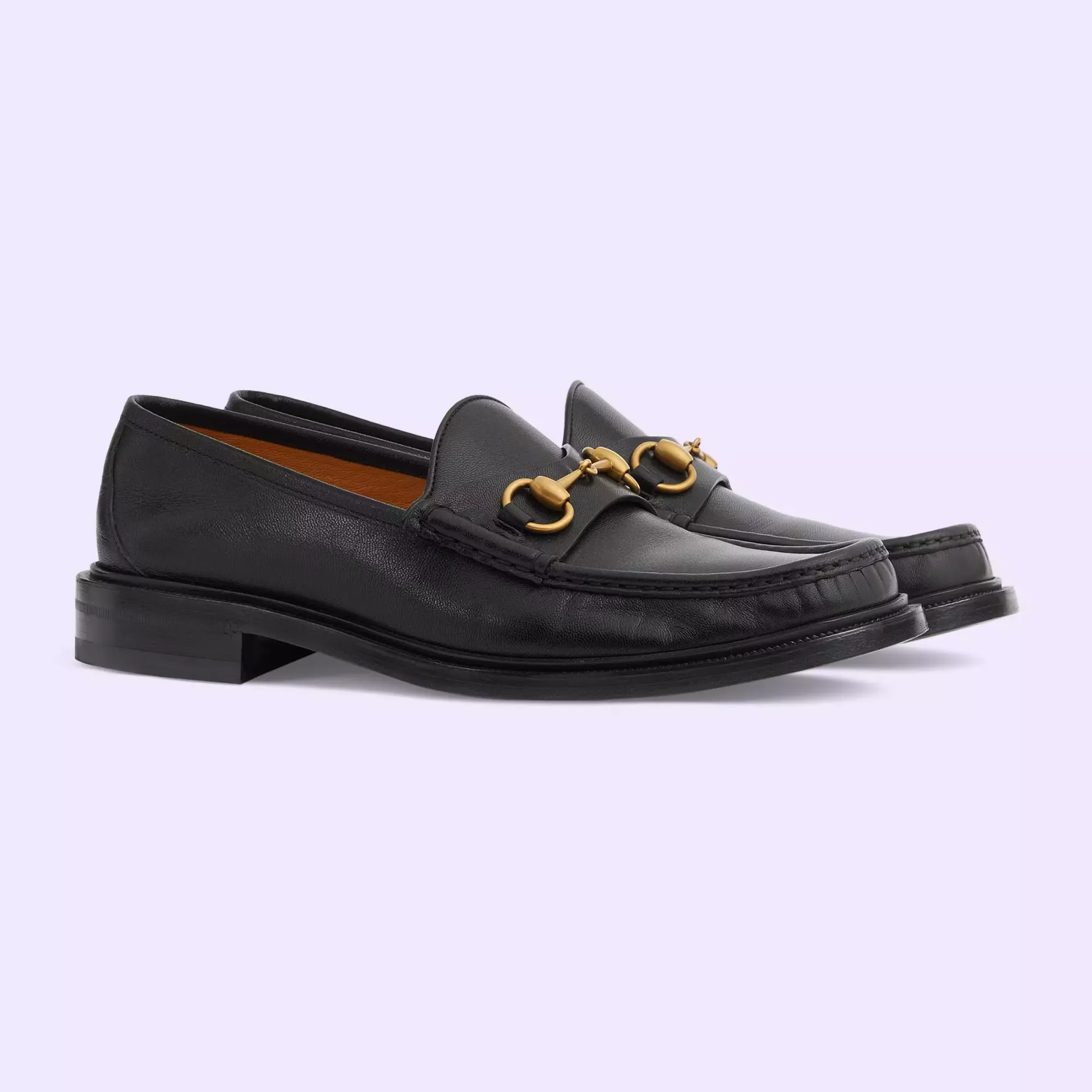
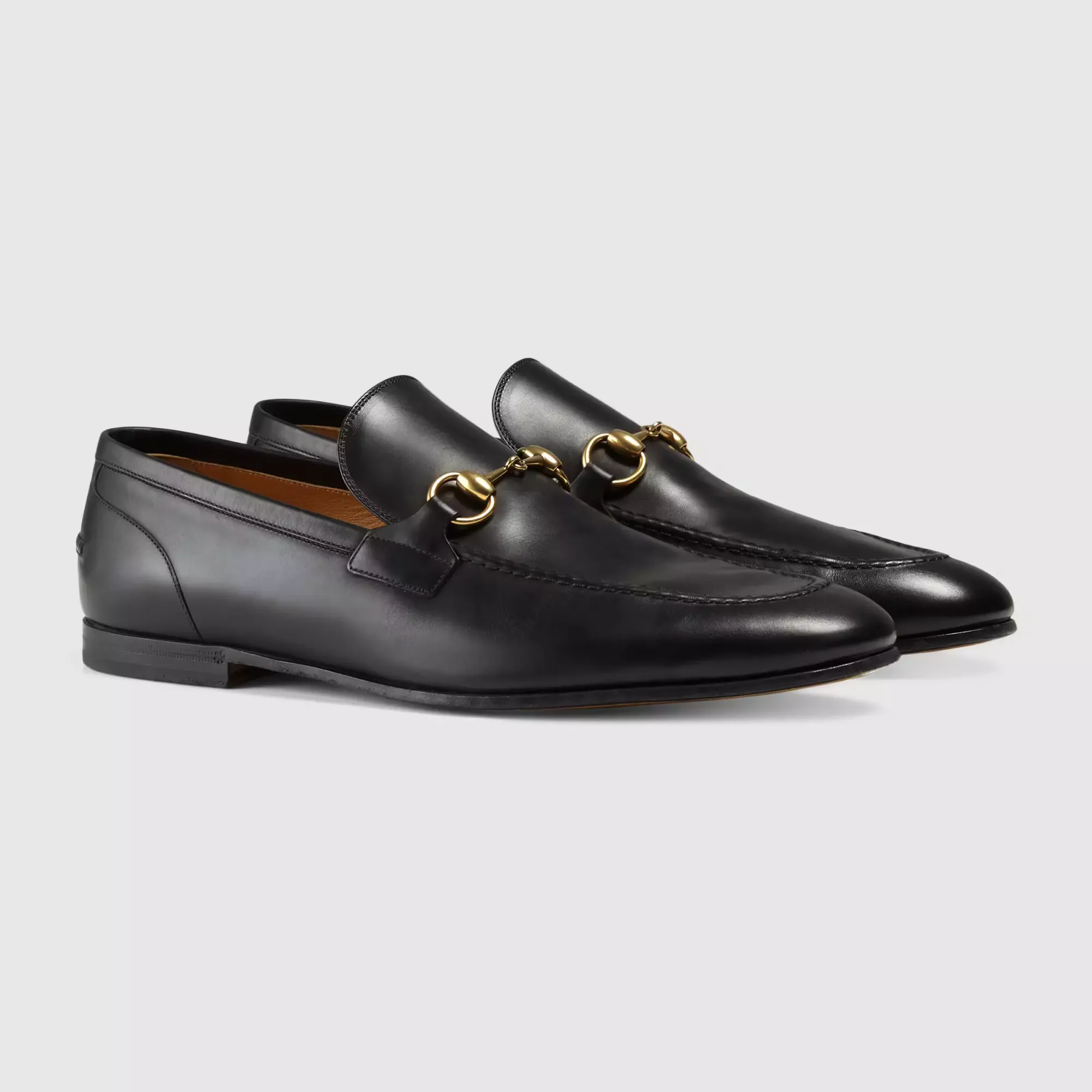
Gucci's 1953 Horsebit loafer has a moc toe. The Gucci Jordaan has an apron toe.
Bit Loafers a.k.a. Horsebit Loafers a.k.a. Gucci Loafers a.k.a. Snaffle Loafers (call them this ONLY if you're a British cartoon character). They were originally made by Aldo Gucci in 1953, fashioned after a metal horse bit. I'd explain what a horse bit is, but... it's not very nice. Anyway, they're defined by that metal link. The shape of the metal link is important. A lot of cheap "bit loafers" just use a metal bar instead of a link, or use links that... just don't look right. We can tell.
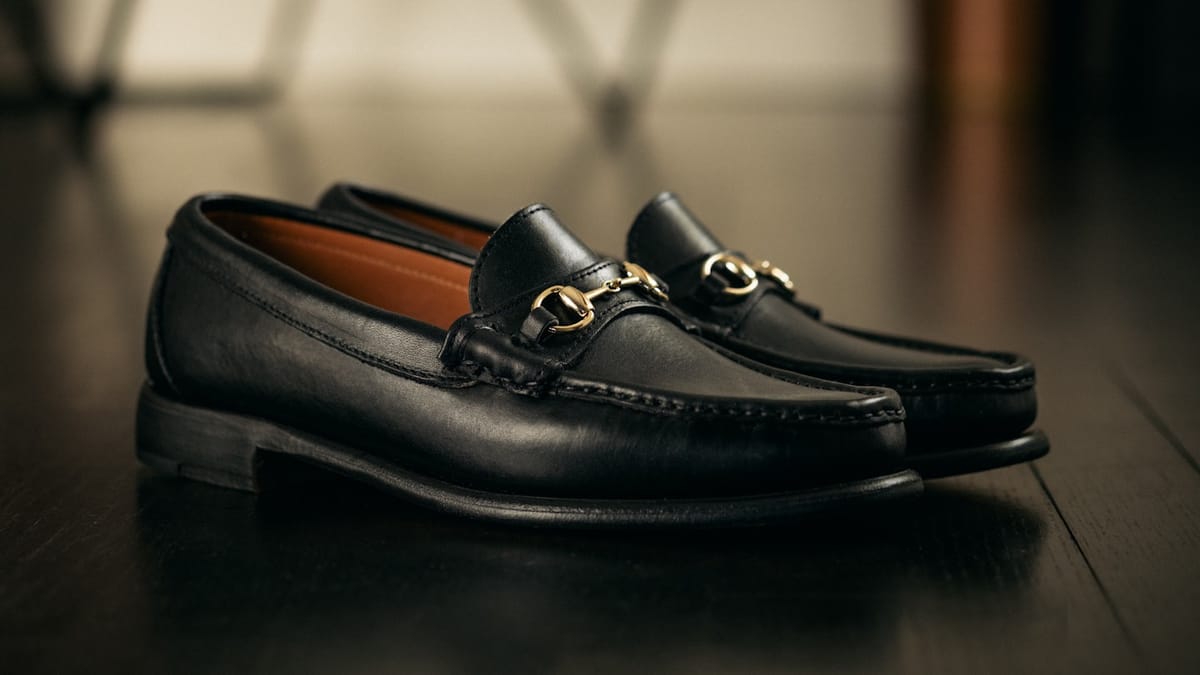
Gucci's originals came in black with a gold bit and moc toe, but they exist with apron toes as well. Even moc toe bit loafers can be formal, either because of the history—bankers and lawyers in New York wore them to work before tassel loafers even existed—or because they're interesting enough to never come off as an accident. Other companies make horsebit loafers these days, but Gucci really would prefer if they were an exclusive style, considering it invented them, and they helped significantly to make their brand what it is. If you want to talk about Intellectual Property... well, that's my day job, so hire me for an hour, and we can get into that. You can afford it, Mr. Gucci Loafers.
Since they're associated with Gucci, and have a shiny piece of metal in the mix, bit loafers can be somewhat ostentatious. Derek Guy said no shoe is more controversial... Which is an overstatement, but still, they're certainly on the bolder side.
And if you're going to be bold, you can't cheap out. Don't try flaunting a pair Cole Haans. They're really a cheap shoe (cheaply made), and they look wrong too—the horsebit is kind of squared, the last is bad, the material won't age well, just... don't. Better budget options come from Carmina and Allen Edmonds. Both of these are close in shape to the Gucci 1953, and are arguably made better, with better materials. That said, Gucci's heritage does count for something, and you might find the Guccis more comfortable, or find something else charming about them.
Fun fact: the Met has a pair of Gucci bit loafers on permanent display. These things are fashion history. And they're also, somehow, considered to fit in with Ivy style, alongside Penny loafers, and unlike Tassel loafers. The shoe with a high fashion history is also a classic move. You just gotta know how to use them.
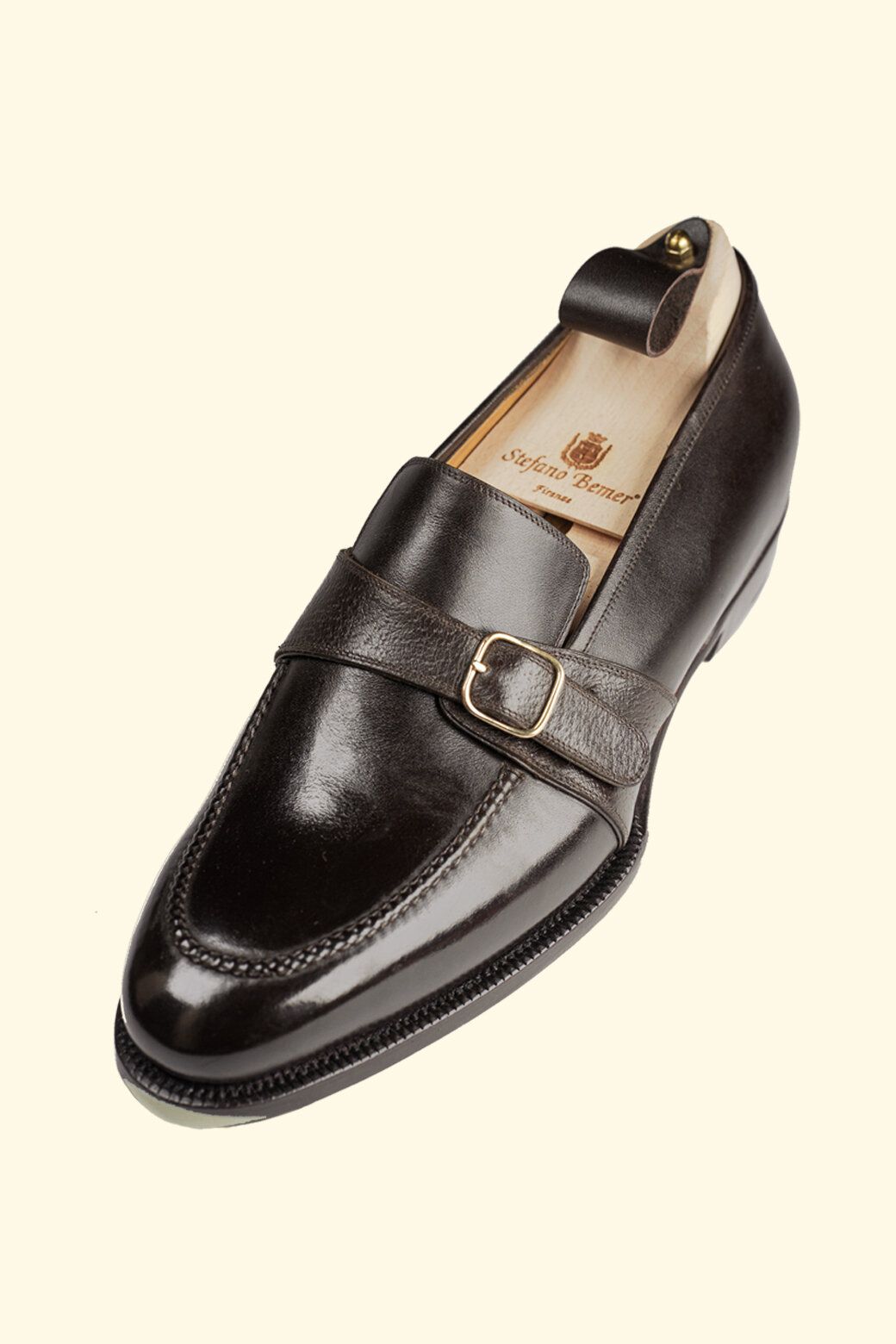
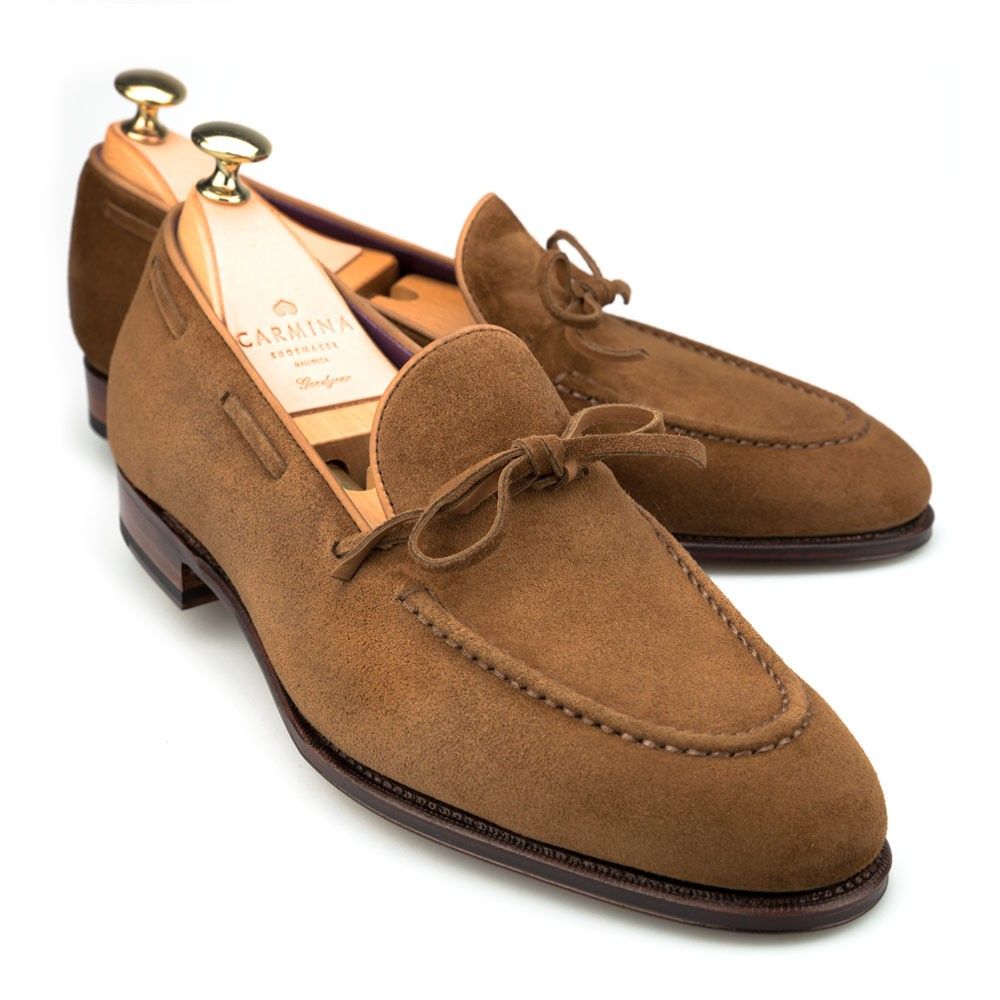
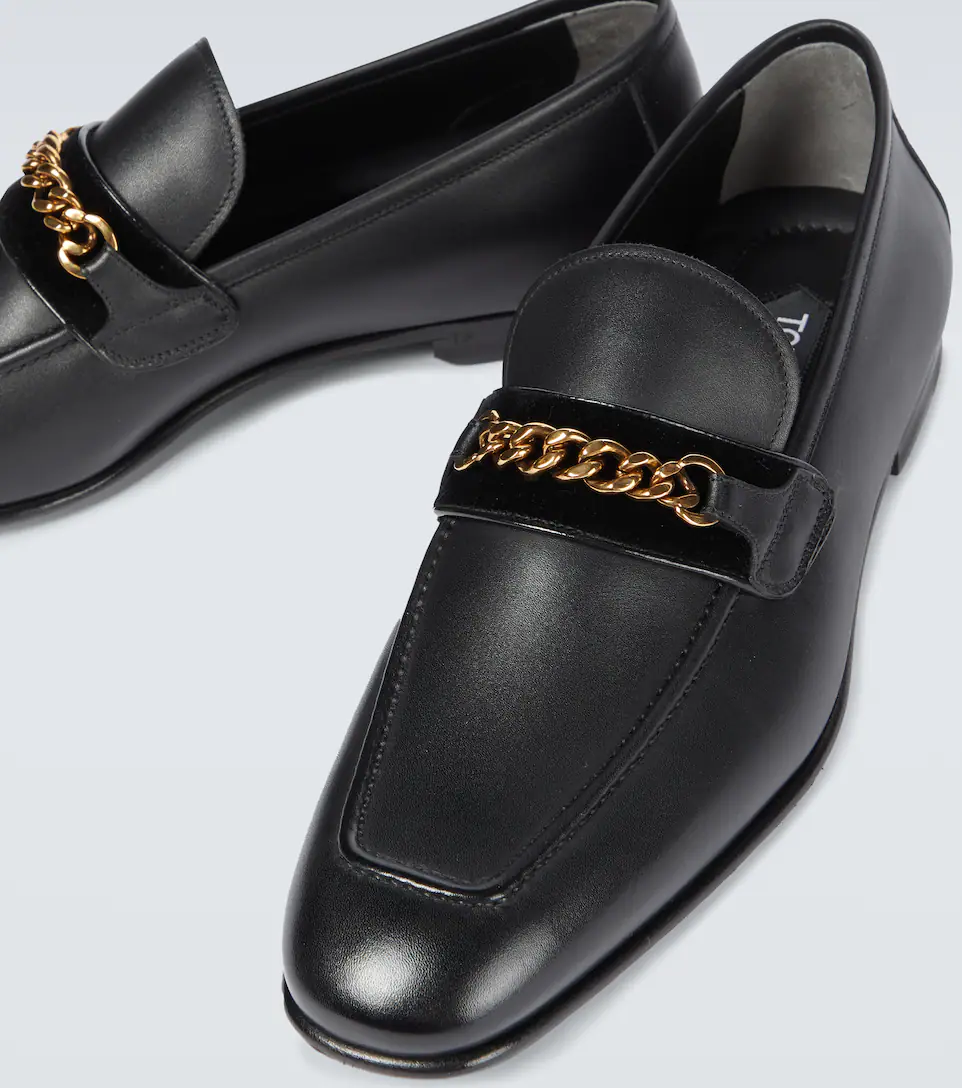
Other loafer styles: Khamai buckle loafers by The Anthology x Stefano Bemer; Carmina snuff suede string loafers; Tom Ford Chain Loafers
Other Loafer styles exist too.
Some loafers have buckles, kind of like single monks (or double, or triple as the case may be). Since these buckles are usually ornamental, I still call them loafers. You probably don't need to undo the buckle to put them on, and they'll probably stay on even if the buckles are undone. I'm a big fan of The Anthology's Khamai loafer, made with Stefano Bemer. Husbands does a slipper with a buckle... which they call a loafer, because, again, I'm just sharing my definitions here. And I really like Majordome's lug-sole split-toe single monk, which might or might not be effective slip-ons, I can't say.
Some loafers some "lacing" in a moccasin-style bow, like these Carmina String Loafers. The snuff suede color was extremely popular on Styleforum for a while as a more casual option.
Tom Ford makes "chain loafers," which are still a fashionny type of shoe. It seems like their current men's section is lacking in chains, although there are plenty of buckles. But go find some chain loafers in a thrift store, that's a good move.
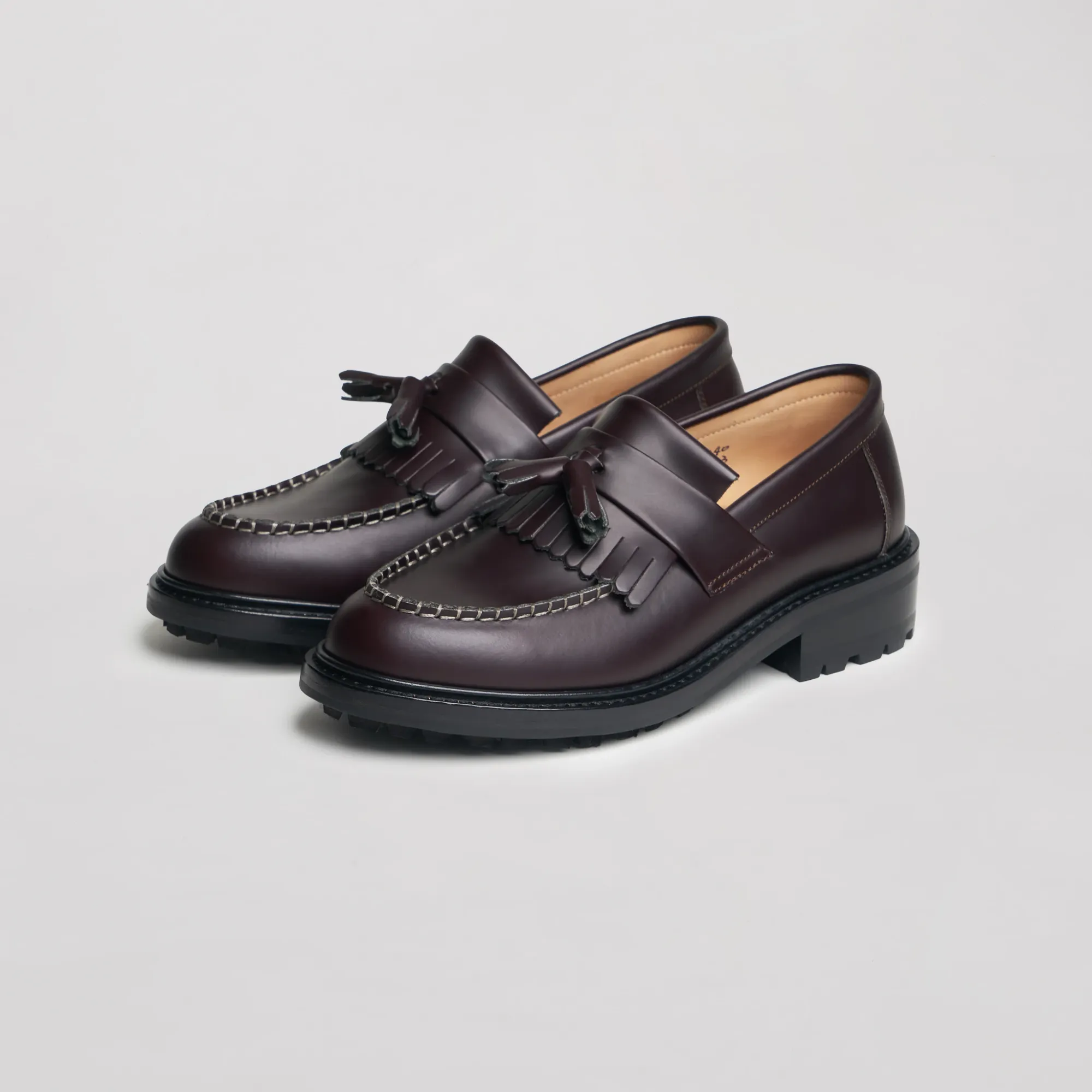
Other Funky Details
Kilted loafers are ugly... but maybe in a good way. A "kilt" is those little... pointed strips of leather coming down from the saddle (you know, the strap thing). Some people call these "kiltie loafers," but that sounds weird to me. chengjingkai office makes kilted tassel loafers with a lug sole. Jacques Solovière does kilted Belgian loafers, with no other detail. I like them.
Two Tone loafers are having a moment right now. Inspired by Spectator shoes, two tone loafers generally use a contrasting material for the vamp—often white leather—compared to the material of the sides and saddle. See below. Aimé Leon Dore, in particular, is known for coming out with a new batch of two-tone penny loafers every season. Blackstock and Weber and Horatio make two-tone horsebit loafers.
Prada makes these popular chunky-soled logo-plated loafers (alt view). I like chunky-soled loafers in general, but I don't care for these in particular. The branding feels excessive to me, maybe because I've seen them so much. But they're popular for a reason, and helped drive the concept of chunky-soled loafers in general.
Lug sole loafers in general are kind of cool, and distinctly casual. Loafers usually have leather soles—even low-profile rubber soles on a good pair of loafers is weirdly rare. If you think of loafers as summer shoes, there's something really cool about throwing a hardcore winter boot type of sole on them. See Blackstock & Weber and Horatio Footwear, agian, along with MAJORDOME. Embracing this chunkiness results in a pretty unique vibe.
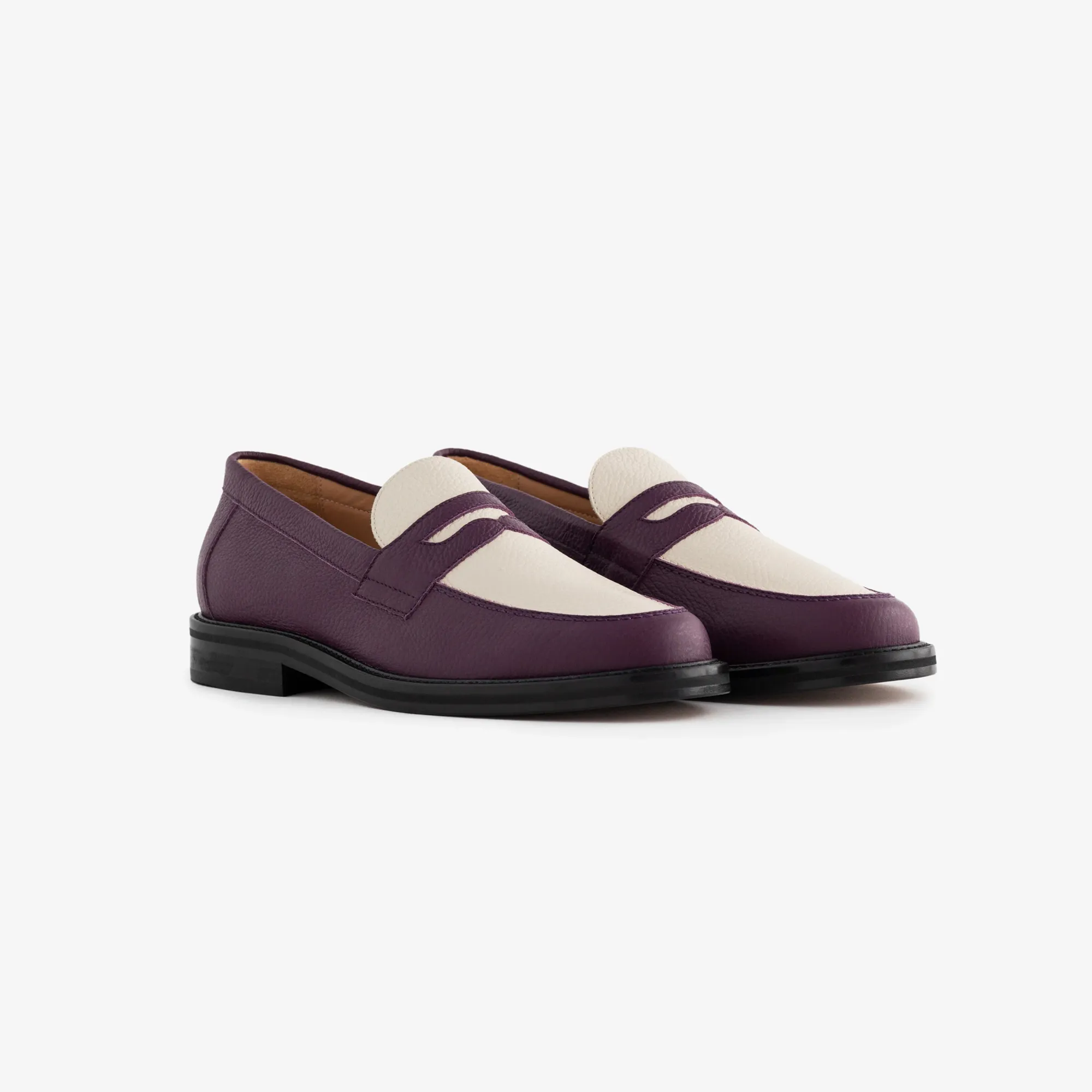
Further Reading
- My Horsebit Loafer Buying Guide
- Finding the Perfect Loafer | Put This On
- Wear Loafers with Jeans | Permanent Style
- Black and Blue: Mid-Light Denim with Black Slip-Ons | The Second Button
- They Are My Aldens (or Ethan’s Shoe Journey) | A little Bit of Rest
- Loafer Tier List | Style and Direction (youtube)

